
NORTHFIELD MOUNT HERMON MAGAZINE SPRING 2024

Student social entrepreneurs take a needs-based approach to issues
FEATURE STORIES 42 The Magic of the Bells NMH’s carillon connects students across 100 years of history 48 Real
Solutions to Real Problems
CONTENTS TABLE OF 48

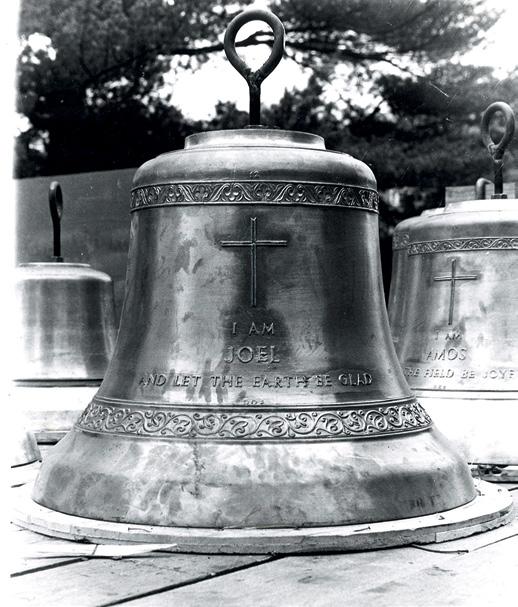
MISSION
Northfield Mount Hermon educates the head, heart, and hands of our students. We engage their intellect, compassion, and talents, empowering them to act with humanity and purpose.
DEPARTMENTS
Cover photo by Matthew Cavanaugh
EDITOR’S LETTER
Maureen Turner
CAMPUS NEWS
Updates, news briefs, and profiles

Editor
Maureen Turner
Design
Aldeia, www.aldeia.design
Production Manager
Meghan Wicks
Contributors
Matthew Cavanaugh
Joanna Chattman P’25
Stephanie Craig
Tony Downer
Abigail Georges ’26
Elise Gibson
Adam Glanzman
James Heflin
Shelley Lawrence
Mik Milman
Sarah Olson ’26
Kathryn Ratke
Lisa Robinson P’23, 26
Lauren Scott
Jessi Shin ’24
Aurora Song ’26
WE WANT TO HEAR FROM YOU! Drop us a line at nmhmagazine@ nmhschool.org and let us know what you think.
Bill Sweet
Lindsey Topham
Harry van Baaren
Todd Verlander
Peter Weis ’78
Rachel Wilkowski
Director of Marketing and Communications
Natalie Georges
Head of School
Brian Hargrove
Chief Advancement Officer
Trish Jackson
NMH Magazine
One Lamplighter Way
Mount Hermon, MA 01354 413-498-3345 nmhmagazine@nmhschool.org
Address Changes
NMH Advancement Services
One Lamplighter Way
Mount Hermon, MA 01354 413-498-3300 addressupdates@nmhschool.org
STAY CONNECTED @NMHschool @nmhschool nmhschool NORTHFIELD MOUNT HERMON MAGAZINE SPRING 2024 12 42
02
LETTER
04
HEAD OF SCHOOL’S
Brian Hargrove
05
ALUMNI PROFILES 38
40 Ann
56 CLASS ACTS nmhschool.org NMH Magazine (USPS074-860) is printed by Lane Press, Burlington, VT 05402
38
Vernon J. ’05
Davlin ’85
LETTER FROM HEAD OF SCHOOL BRIAN HARGROVE
Looking Back and Looking Forward
NMH’s path is guided by the North Star of its mission
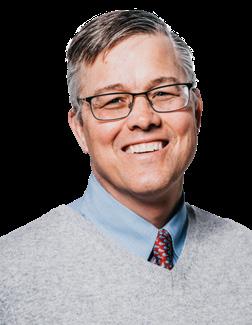
GREETINGS from Northfield Mount Hermon.
By the time this issue of NMH Magazine reaches mailboxes, I will be wrapping up my fifth year as head of school. As I celebrate this anniversary, I am happy to share a few of my learnings from our time together, as well as my hopes as we look to the next five years.
When I began to get to know NMH during the recruitment process, our school’s differentiating purpose came to light very quickly. NMH’s bedrock belief — reflected in our people, our program, and our place — is that education transforms individuals as they find purpose in their potential. As our students discover their best selves, the school’s collective impact echoes in communities far and wide. Our founder, D.L. Moody, set the mold and the mark: We would be a school that delivered the highest-quality education, our doors would be open to all those who would benefit from and contribute to our community, and, together, our graduates would make a profound difference as citizens and leaders in the world.
For nearly 145 years, we have sought to live this vision as we engage students’ heads, hearts, and hands. I am struck by the clarity and enduring quality of this educational experience. I also am inspired to consider how we can lean more fully into this vision in the years to come. I would argue that the path forward reflects, in many ways, our origins, as we focus on our own North Star and invest in our people, our program, and our place in new ways.
NMH’s people are, far and away, the school’s greatest resource. Our students and adults bring diverse backgrounds, perspectives, identities, and aspirations to our campus. This was
true in our school’s earliest days, and it remains true today. Take, for example, three extraordinary educators whom we say goodbye to this spring: Dean of Enrollment Claude Anderson and English teacher and postgraduate advisor Sandy Messer, who are both retiring, and Dean of Equity and Social Justice Martha Neubert, who is leaving for new opportunities. All three are leaders at our school and in their disciplines. The kind of depth and breadth among adults and students at NMH is simply not the norm at other schools. A walk across our campus, a visit to a classroom, or a drop-in at an alumni event demonstrates what our community knows and values deeply — namely, our diversity is a profound strength.
I recently had breakfast with Anissa Yu ’24 to discuss her senior capstone project, which looks at NMH’s history. In our conversation, she cited Moody’s vision for our school and the remarkable nature of our shared commitment to our values and mission. She questioned why we don’t do even more to advertise and celebrate NMH’s DNA and how it’s lived out today. Anissa’s reflection — and, indeed, the nature of our capstone program — underscore how we center students in all that we do and emphasize the value of engagement. Knowing students, pivoting to meet them where they are, and creating an environment that allows them to deeply examine themselves, the conditions of the moment, the systems at work, and the content of the day at hand allows for the deep learning that is integral to an NMH education. At NMH, we focus on academic excellence and citizenship across the life of campus. Classes are small (usually 12 to 16 students),
02 NORTHFIELD MOUNT HERMON MAGAZINE
experiential-based learning is the norm, and participation in community life is our shared expectation. Our commitment to engagement allows for the rigorous examination and exploration of content; it requires creativity, critical thinking, and strong written and verbal communication; and it allows for students to access the opportunities that our diversity offers. Ultimately, this delivers an education that equips students with an increasingly rare skill: the ability to navigate through differences, find common ground, and move forward together.
For me, it is impossible to note our people and our program without also shining the light on this special place on the Connecticut River we call home. While I am sure there are campuses with similarly majestic surroundings, I have not yet seen one. Waking up to the sun rising over the hills in Northfield, seeing how the light moves across our campus differently with the passing of each season, and looking up to thousands of stars each night is a gift. Our students learn and live in an extraordinary place. They experience firsthand the joys of discovering all our campus offers. And, as they do, they benefit from understanding their connection to the rhythms of the earth. Our natural beauty must be complemented by our resolve to steward our campus facilities and resources in support of our people and our program. Walking around campus, I believe we can say with certitude that we have made tremendous progress in ensuring that facilities find balance with our natural setting and the program needs of our students, today and in the decades to come.
As I consider the journey we have been on together, I am proud of all that we have accomplished. Our scorecard points upward in nearly every way:
• We have benefited from robust and growing interest in attending NMH — applications are near 30-year highs.
• We have delivered consistently high matriculation to outstanding colleges and universities — more than 60% of graduates choose to attend top-50 colleges and universities, as measured by U.S. News & World Report.
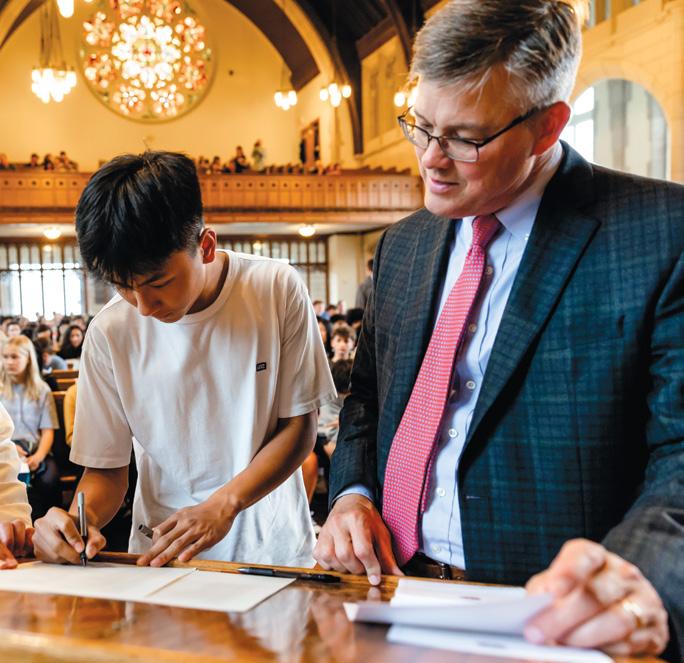
• We announced the $225 million This Place, This Moment: The Campaign for Northfield Mount Hermon to fund strategic priorities and have secured $160 million in commitments to date.
• We have made record investments in people: In the last five budgets, we delivered a 40% increase in scholarship support, a 25% increase in employee retirement match, a commitment to pay a living wage to all employees, and a 25% cumulative increase in faculty salaries.
• We funded $50 million in new academic, athletic, and residential spaces: the Gilder Center, the Draper Riverhouse, the Calagione Fitness Center, the Li Wrestling Center, five new faculty homes, and Norton Cottage.
As you read the following pages, I invite you to reflect on NMH’s impact on you and your family, as well as on what the school means more broadly to communities around the world. I then have an ask: Take action to engage in the life of our school as an advocate, volunteer, and donor. Northfield Mount Hermon is strong, and we will become even stronger as alumni, parents, and friends join together in living Moody’s vision and advancing our mission. [NMH]
SPRING 2024 03
PHOTOS: JO CHATTMAN, STEPHANIE CRAIG
Every year at Matriculation, new students sign their names to a book listing all NMH students, signaling their commitment to the community.
LETTER FROM THE EDITOR
Behind the Scenes
ON A BRIGHT MONDAY morning in early February, two of my communications office colleagues and I went on an adventure: We climbed up to the tower of the Rhodes Arts Center, home to the McRoberts Carillon, to scope it out for an article in this issue of NMH Magazine.
The chilly winds notwithstanding, it was a pretty magical way to start the workweek. Above us hung the 47 imposing brass bells, the largest more than two tons, that make up the magnificent instrument. Spread out below us was the beautiful campus, which since last fall has been graced with the carillon’s music on a daily basis. As students and faculty and staff go about their days, they do so to a distinctly NMH playlist — from “Jerusalem” to “Hedwig’s Theme” from the Harry Potter movies — chiming from the tower.
It’s always a bit of a thrill to hear the carillon playing. But just as enjoyable was the process of learning the story behind this special part of NMH history. It began with that Monday morning behind-the-scenes adventure, when Joe Ruscio ’05, a manager in the plant facilities department, graciously chaperoned me and my colleagues Harry van Baaren and Meghan Wicks up to the tower, a circuitous journey that began with a trapdoor in the ceiling at the back of Raymond Theater and involved two more ship ladders before we reached the top.
I learned more after connecting with NMH archivist Peter Weis ’78, who shared historical records and photos and stories about the carillon,
MAUREEN TURNER ILLUSTRATION: KATHRYN RATHKE
from its earliest days at Northfield’s Sage Chapel to its 1966 expansion to the major undertaking of moving it to the Gill campus in 2008. Other members of the community also helped put together the backstory of the carillon and its recent resurgence: Associate Head of School Charlie Tierney led the charge to make the chiming bells part of everyday life on campus. Craig Sandford, the assistant director of choral music, picked up Tierney’s enthusiasm and made that happen. Christie Wang ’25 has been so intrigued by the instrument that she’s learning to play it herself, following in the footsteps of long-ago Northfield students who once vied for that coveted honor. Now, when I hear the carillon playing, I think about all the members of the NMH community, stretching back over a century, who made it possible.
As we worked on this issue, I found myself thinking a lot about what happens behind the scenes — both literally and figuratively — here at NMH. Our students, teachers, staff members, and alums are an impressive lot, to say the least. The best part of my job as editor of this magazine is sharing the stories of the not-always-seen hard work and care that go into what makes this school a special place: The ways that NMH students, past and present, absorb our mission and then apply it, in a range of ways, to their lives and their work. And the ways that teachers and coaches and other adult mentors support those students and empower them to find purpose in their potential.
For an up-close example of that work, we also share in this issue a story about the Rhodes Fellowship Course in Social Entrepreneurship. As in many NMH courses, students in the fellowship dig deeply into the root causes and long-term effects of social problems, inequities, and injustices. But the intensive nature of the course gives students even more time and space to grapple with these issues and then create a social enterprise to address them. In the article, you’ll read about some of the inventive enterprises students have developed, from a STEM tutoring project to a program that collected unused toiletries from hotels to pass on to people living in shelters to a sustainable candied-fruit business that helps reduce food waste at Alumni Hall.
The projects are impressive in and of themselves. But it’s the behind-thescenes work that the students — with the mentorship of their teachers, Tae Kim and Grant Gonzalez — put in that stays with them, long beyond the end of the course: understanding complex issues, then developing effective, achievable solutions, taking care to center the needs of the communities they’re meant to help. In other words, living the NMH mission. [NMH]
04 NORTHFIELD MOUNT HERMON MAGAZINE

CAMPUS NEWS
PHOTO BY HARRY VAN BAAREN
A Head’s Day of Rest allowed students to kick back and enjoy the partial solar eclipse on April 8. Some students and teachers traveled to Vermont to see a full eclipse.
Poetry in Motion
Student poets find — and share — inspiration across campus
NMH’s student poets have taken their work public this year. In the fall, students in a creative writing class taught by M.K. Brake posted their work in installations around campus. The assignment was inspired by “The Gorgeous Nothings,” which presented Emily Dickinson’s poems in a new light. Dickinson wrote in very experimental ways that were way ahead of her time. She would make little sculptures and shapes with scraps of paper and then write poems inspired by those shapes.
Brake asked her students to “look to our campus as their kind of raw materials and take the work off the page.” Some students chose places on campus that were significant to them or beautiful, and others chose places that could use a little more beauty in them. Brake assigned the project, she said, to show that “poetry isn’t just this dead thing on the page. It can take all kinds of forms and raise awareness about all the possibilities that poetry can be.”
Ben Liu ’24 chose to dedicate his poem to a tree on campus. The Dawn Redwood is an endangered conifer tree from China. It was thought to be completely extinct before it was discovered in a province in China. He said the poem and tree symbolize the immigrant experience. He used the tree shape to tackle themes of gender identity as well.
This winter, Jessica Zhang ’25 organized a poetry club on campus. The previous summer, she attended the Kenyon Young Writers Workshop and was enthralled by the poetry and passion there. Zhang said she “desperately wanted to recreate that on campus.” So she got to work.
The new club is called the Dead Poets Society. At the meetings, the poets receive a prompt, and everyone writes a poem and shares it with the group. If anyone says something self-deprecating, the other students moo. The idea behind the mooing is that it is funny, embarrassing, and effective in stopping self-doubt. There are also always snacks at the meeting, because, as Zhang says, “Poets get hungry!”
Maeve Tholen ’25 joined the club because she simply loves writing poetry. She also loves getting feedback and inspiration from others in the group. “Sharing your writing makes you feel incredibly vulnerable, but in this group of
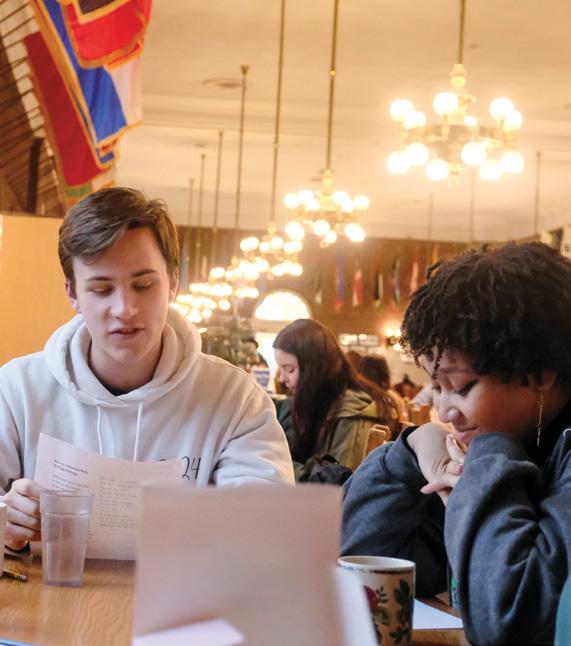

supportive people, it is a really positive and uplifting experience,” she said.
The purpose of the club is “to write with abandon, without fear of judgment, without the looming threat of grades and expectations,” Zhang said. “To be writers, poets, artists, and people. To seize the day. To suck the marrow out of life.”
— Sarah Olson ’26. Photos by Aurora Song ’26.
06 NORTHFIELD MOUNT HERMON MAGAZINE CAMPUS NEWS
Top: A meeting of the Dead Poets Society. Bottom: Student poets displayed their work around campus.
NMH CELEBRATES
Martin Luther King
In keeping with tradition, in January, NMH celebrated the Rev. Dr. Martin Luther King Jr.’s birthday with a week of events. “As you might imagine, it’s hard to do this man and movement, past or present, justice in just one day,” Martha Neubert, dean of equity and social justice, said at an all-school meeting. “It’s part of why the school takes several more days. Ideally, we’re focusing on injustice every day here.”
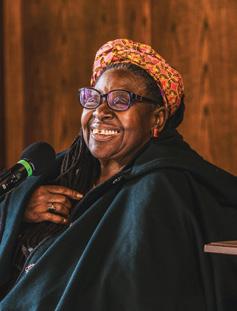
Weighing In
Last year’s U.S. Supreme Court ruling striking down the use of affirmative action in college admissions has upended the process for students across the country. In January, as seniors worked to complete their applications, the New York Times turned to members of the NMH community for their thoughts on what the ruling means for students of color.
“Even with affirmative action in place, it’s always a struggle for people in our community to get to college and to succeed in college,” Guila Curley, a college counselor on the Navajo Reservation in New Mexico whose son, Deshayne, is an NMH senior, told the Times.
MLK Week, which is planned by the Student Diversity Committee, the Global Ambassadors, and the Office of Multicultural Affairs, included discussions, films, homework assignments, a curated selection of books in Schauffler Library, and performances by the Camerata Baltimore gospel choir and the NMH Jazz Ensemble.
The centerpiece of the week was a keynote talk by Smith College professor Loretta J. Ross, an activist, scholar, and recipient of a MacArthur Foundation “genius grant.” Ross spoke about subjects ranging from her path to activism and her emphasis on human rights to her tactics for staying resilient in the face of difficult work. Her talk was followed by a discussion with students, moderated by Willow Sujin Brandt Kwak ‘24 and Alex Tse ’24.
“The joy of life is something that we are supposed to be experiencing,” Ross said. “Even as you are looking at some of the worst things that human beings do to each other.
“But,” she continued, “you have to fight with joy. If you’re fighting for equal rights on the right side of history and you are not having fun, check yourself. You’re doing something wrong.”
“It felt good to see someone who looks like me be able to talk in front of a school full of kids about reproductive justice, something I’ve been learning about since I was born,” Lanie Blanton ’25 said after Ross’ talk. “It not only made me feel empowered but made me want to empower others. I felt called to think on how I’ve handled situations and endured experiences in the past and reflect on how I could do better using those experiences to aid me.”
— Shelley Lawrence
“If you’re fighting for equal rights and you’re not having fun, check yourself.”
Loretta Ross
The court ruling, the Times reported, has prompted some students to rethink how they approach their applications, using their essays to share the ways that their identity has shaped them. Joe Latimer, NMH’s director of college counseling, advises students “to present their identities as ‘strength based,’ showing the positive traits they have built from their experiences as a person of color,” the article noted. For Deshayne Curley ’24, for example, that meant an essay contemplating an heirloom necklace that reminded him of his home on the reservation.
Delphi Lyra ’24 addressed the complicated terrain created by the ruling. “The idea behind the ruling is to not check a box,” she told the Times, referring to application questions about race and ethnicity. “But I think, in some ways, it has almost even created more of a need to check a box.”
— Maureen Turner
Seniors Deshayne Curley and Delphi Lyra
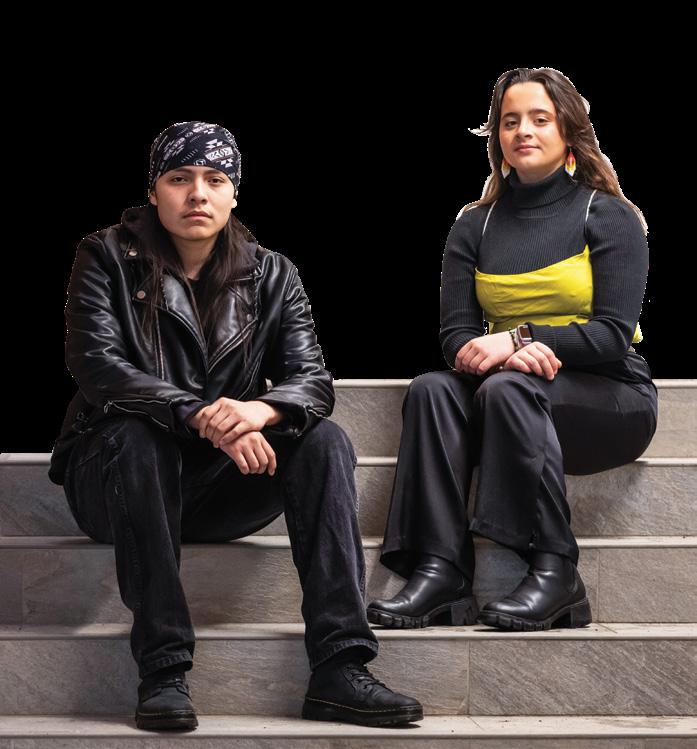
SPRING 2024
PHOTOS: MATTHEW CAVANAUGH, ADAM GLANZMAN FOR THE NEW YORK TIMES
See photos from the weeklong celebration at flickr.com/photos/ nmhphotos/albums.
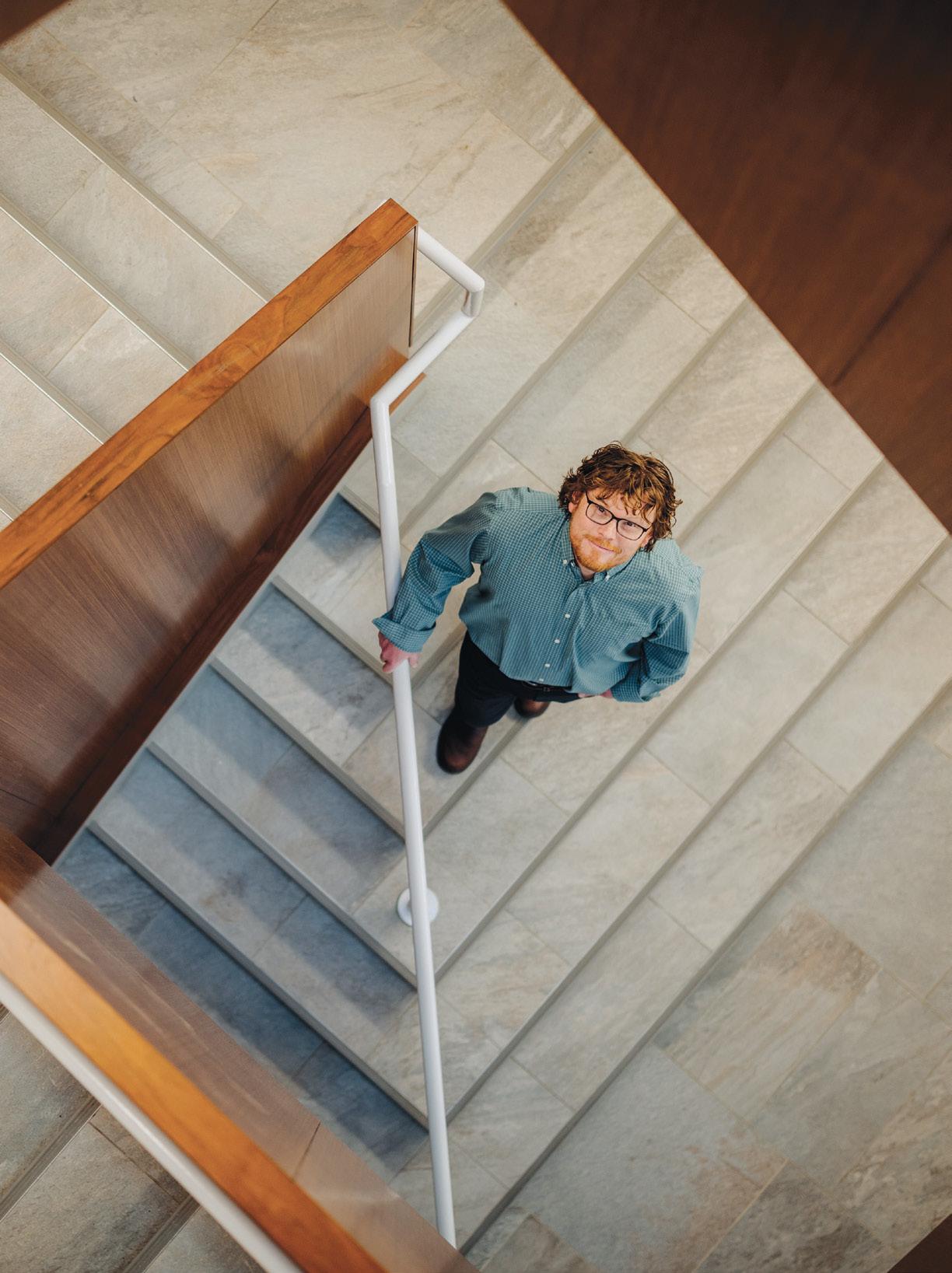
CAMPUS NEWS
FACULTY
David Pillsbury
WHEN DAVE PILLSBURY first came to NMH in 2014, with 14 years of teaching and coaching under his belt, he says, “I honestly thought I had teaching all figured out.”
Instead, he found, happily, that NMH was a place where he could continue to grow. “Having colleagues and my department chair visit my classroom and offer suggestions for growth verified that I had chosen the right place to work,” says Pillsbury, who teaches math and directs the school’s Penn Fellowship Program. “I have been pushed to grow each year as a white, cis-gender, male teacher at NMH, and I know I am a better teacher because of those observations.”
He’s also learned a lot as the parent to two NMH students: Madigan ’25 and Kiley ’27. “Seeing NMH through the eyes and experiences of my children has been an additional way for me to grow,” Pillsbury says. “I gained a broader and deeper glimpse into the NMH experience as my children became students here.” In fact, one of the reasons that he and his spouse, Kathleen Pillsbury, an academic coach at the Center for Academic Strategies and Achievement, came here was the educational opportunity it offered their kids.
What first drew you to NMH? The location. I actually grew up in Gill, and my mother, Joan Pillsbury, still lives in town. I ran around campus as a young kid with my friends who were faculty children: Matt Striebel, Mike Peller ’98, and Tony Sorci ’00. As an adult, I was drawn back to Gill by the school’s mission and by the students I spoke with in the student interview group. They asked tough and sincere questions; I was excited to work with students who ask the hard questions.
What roles have you played at NMH?
When I arrived, my family and I lived in the North Annex of Crossley. I ran Lower North Crossley for several years, taught math, and coached soccer and lacrosse. In 2022, after the unexpected and untimely passing of Hugh Silbaugh, one of the founding directors of the UPenn Fellowship program, I was hired as the next director. Now, I get to teach my own students and support early-career teachers as they navigate being both graduate students and full-time teachers.
How do you approach teaching a classroom full of students whose confidence in math might vary greatly? I share with my students on the first day of class that my goal is for them to have a positive math experience, fully recognizing that this has not been the reality for some. Modeling and supporting a learning environment by celebrating the questions that students ask in class is fundamental to my role as an educator. I will answer a question with the same energy, even when another student may just have asked the exact same question. I am fueled by their curiosity, and I want them to question everything without hesitation. Once the students feel comfortable in the classroom and are willing to ask questions and make mistakes, then the real learning can begin.
What does your work directing the Penn Fellows program entail? I support the mentors and fellows throughout the school year. I work with Penn professors to teach some graduate
school sessions, and I offer feedback on work by fellows at other schools. In June, I spend a week at UPenn as the second-year fellows prepare for their inquiry project and the first-year fellows are onboarded. There are also several UPenn weekends throughout the year when I travel to other schools and teach and attend sessions. I learn so much from this group of people each time I interact with them. My goal is to find more ways to share the joys and methods of teaching with others at NMH and in the wider teaching community.
What’s the most challenging part of your job? Most rewarding? Most fun? The most challenging part is needing to assign a letter grade to represent the learning a student has done in a set amount of time. Rarely, if ever, can a letter grade truly capture the story of a student’s journey through mathematics. The most rewarding part is collaborating with other people. I love to share what I am doing, and I truly value the suggestions and observations that people offer me. The most fun part is seeing a student’s face light up when they make the connection and “get it” for the first time.
What’s your favorite spot on campus? Standing near the east doors of the chapel and looking out over the river valley, particularly when I observe large birds soaring below me down in the valley.
Your favorite NMH tradition? I really enjoy the way students thank the teachers at the end of class. I forget about it nearly every day and am always pleasantly surprised when it happens. I appreciate their gratitude.
PHOTO: MATTHEW CAVANAUGH
SPRING 2024 09
PROFILE
Sacred Texts
Student-curated exhibit highlights Bible collection

“I have always wanted to work with old materials,” said Jessica Zhang ’25. “I just feel a lot of joy when I open up something really old and I get to learn about it and tell other people about it.”
In the fall semester, Zhang and Rachel Huynh ’25, both Interfaith Council leaders, collaborated with NMH archivist Peter Weis ’78 to develop “The NMH Bible Collection,” featuring 13 books from the school’s collection of 60 historic Bibles. The exhibit built upon work by Sofiia Tiapkina ’24, who had created a database of the collection.
Among the gems: a Bible from 1585, one written entirely in Japanese, another in Irish, and another in Middle English. One of Zhang’s favorites is illustrated by notable 19th-century painter James Tissot. “He specialized in Biblical events and stories, and his works were incredibly popular in the later 1890s,” she said.
Arguably the pièce de résistance is a Bible that was awarded to William Henry Jackson, an English student who attended classes at NMH for several months in 1891. Its flyleaves contain a remarkable collection of autographs, including those of Presidents Theodore Roosevelt, Franklin Roosevelt, and Harry Truman; British Prime Minister Winston Churchill; Madame Chiang Kai-Shek; General Douglas MacArthur; and NMH founder D.L Moody.
Weis had wanted to develop an exhibition of this kind for years. “To have two young people who are fearless and hardworking and who were willing to take the time to write the captions — it was such a serendipitous, wonderful
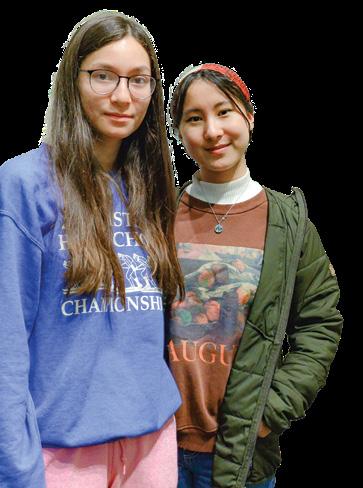
In their curatorial statement, Zhang and Huynh wrote, “We hope that this exhibition will not only imbue you with a greater sense of appreciation for our school’s history but also allow you to enjoy old, sacred texts up close. How cool is it that we can be within inches of a book from nearly 400 years ago?”
— Shelley Lawrence

ALUMNI FELLOWS INITIATIVE
This year saw the launch of the NMH Alumni Fellows Initiative, a pilot project that brings distinguished alumni to campus to engage with students and faculty in meaningful ways. The initiative is supported by a gift from Ruth Stevens ’68.
The fellows program kicked off in November with a visit from Kimmie Weeks ’01, founder and executive director of Youth Action International, a nonprofit that supports youth in postwar African nations through education, healthcare, and economic initiatives. A survivor of the civil war in Liberia, where he grew up, Weeks has devoted his life to developing and leading organizations that support peace, economic selfsufficiency, and education.
During his busy two days at NMH, Weeks visited classes, shared meals with students, and toured the campus. He also took part in a moderated discussion about citizenship and leadership with Michael Sorrell, president of Paul Quinn College, a historically black school in Dallas.
“Whatever road you take, always be aware that you have the ability not only to create wealth for yourself — you also have the ability to make a difference in the lives of people in the poorest countries, and it doesn’t take a lot,” Weeks said. “Each of you has the capacity to effect change.”
In a visit to a foreign policy class, Weeks and students discussed national security strategy and the critical importance of Africa in the 21st century.
“Kimmie explained the development challenges for states dependent on food and fuel imports that are hurt by national and local corruption,” teacher Charlie Malcolm said. “He shared his firsthand accounts of working with the water administration of Liberia and the challenges facing African organizations working on economic development and regional peace and security.”
Since Weeks’ visit, “there isn’t a day that goes by that the students do not connect the dots to what they learned from Kimmie,” Malcolm added.
“I’m so pleased that the first alumni fellow was received with such enthusiasm on campus,” Stevens said. “Many thanks to [Director of Alumni Engagement] Stacie Hagenbaugh and her team for the vision and flawless execution. Here’s to many more fellow visits!”
— Shelley Lawrence
NORTHFIELD MOUNT HERMON MAGAZINE CAMPUS NEWS
PHOTOS: NMH ARCHIVE, MATTHEW CAVANAUGH, SHELLEY LAWRENCE
Curators Rachel Huynh and Jessica Zhang
Kimmie Weeks ’01
MODEL UN ACHIEVEMENTS
In January, 15 members of NMH’s Model UN team attended the Harvard Model United Nations conference, which brings together 4,000 students from around the globe to present, host Q&A sessions, sponsor resolutions, and navigate the complexities of alliances.
“It was inspiring to see these students collaborate to address a variety of global issues — and, in one case, issues pertaining to another universe, Barbieland,” said advisor Tiffany Thiri.
NMH’s Wilson Cheung ’24 received the Outstanding Delegate Award for his work on the Economic and Finance Committee.
Gabrielle Alingog ’24 received a Diplomatic Commendation for her role as “Military Barbie’’ on the Barbieland Ad Hoc Committee. Ivan O ’25 was awarded a Diplomatic Commendation in the Human Rights Council. While the honors are an important recognition, Thiri said, “The most enriching aspect is arguably the opportunity to interact with and build relationships with peers from around the world, fostering a unique sense of global community.”
— Maureen Turner
“ The most enriching aspect is arguably the opportunity to interact with and build relationships with peers from around the world, fostering a unique sense of global community.”
PICTURE THIS

Serving the Community
NMH students take the school’s mission to act with humanity and purpose to heart — on and off campus.
This year, service projects took students to the nearby Green River, where they helped clean up debris as part of the annual Source to Sea Cleanup. Spanish IV students traveled to Gill Elementary School once a week to offer language lessons to first- and second-graders, while students in a calculus class visited fifth- and sixth-graders at the school to share higher-level math concepts in the form of a children’s book.
In the winter, NMH student musicians warmed up a cold day with a performance at The Arbors senior community, an event organized by Allen Chen ’26. The Fiber Arts Club, meanwhile, hosted a cozy meeting in the Blake Student Center one Saturday evening, where members created warm hats and scarves to donate to the Greenfield Family Inn, a shelter for homeless adults.
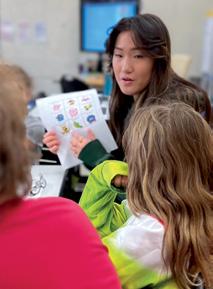
Among other initiatives: Students volunteered at mobile food bank and community meal programs, organized parties for children living in shelters through NMH’s Operation Happy Birthday club, created and delivered holiday cards to residents at Poet’s Seat Nursing Home in Greenfield, volunteered at a “Scarecrows in the Park” community event in Bernardston, and sold delicious Asian meals for the Lunar New Year to raise money for a local Meals on Wheels program through the Penguin Pals Club.
“What’s so important to me is the true spirit of service the students bring to these endeavors,” said Kensey Batchelder, NMH’s director of work and service learning. “These opportunities don’t offer credit or show up on college applications; the students want to be there and choose to volunteer their free time to make a real difference in the lives of others.”
— Maureen Turner
SPRING 2024 11
The cross-country team ran in style — specifically, in banana costumes — at the 133rd annual Bemis-Forslund Pie Race in November.
Teaching Spanish to local elementary school students PHOTOS: MATTHEW CAVANAUGH, SHELLEY LAWRENCE
Josh Lee ’24
At NMH, Lee has found community on the field and the court, in the classroom, and as a student leader
BY MAUREEN TURNER
JOSH LEE took a bit of a gamble when he decided to come to NMH four years ago: Because of COVID-19 precautions in place at the time, he wasn’t able to visit campus until his first day of 9th-grade orientation.
But he had a good feeling about the school, based on the admission process, which included opportunities to connect with current students. “NMH seemed like a very inclusive community that I wanted to be a part of,” he said.
This spring, as Lee prepared for his graduation, he was glad that he’d taken that gamble. Over his time at NMH, he distinguished himself as an honors student, a versatile athlete, and a campus leader. He also found community. “It’s been different than I imagined it being when I first got here, but a good different,” he said.
Lee learned about NMH through Prep for Prep, a leadership development program for students of color. Leaving his family in New York to live at a boarding school took some getting used to, he recalled. “It took me a while to branch out, to be comfortable with stepping out and meeting people.”
One of the first places he found connection was the Black Student Union, “being in a group of kids who I related to and could talk and laugh and have fun with,” he said. “Having that friend group helped me settle in and feel comfortable.”
Lee went on to join the Student Diversity Committee, which develops activities focused on equity and social justice, including NMH’s MLK Week. “Having a student voice in the discussion has been great for fostering an inclusive community,” said Lee. So, too, has been the work of outgoing Dean of Equity and Social Justice Martha Neubert, he added. “I’ve talked to her about so much. She’s been one of the biggest influences on me.” (See related story, page 22.)
Lee also became a leader of Breakaway, a Christian group open to all students, regardless of their beliefs. “We get together on Friday and sing and have food and be in each other’s company,” he said. “That’s something I’ve looked forward to at the end of every week for the last four years.”
Another place Lee has found his home at NMH is athletics. Basketball is his main sport, but he’s enjoyed trying others. “I really like how NMH has a team for every level,” he said. “It’s really welcoming for anyone who wants to try out a sport.” In the fall of his senior year, Lee joined the cross-country team, mostly to get into condition after missing basketball season due to an injury. “But I ended up loving it,” he said.
Jamie Rourke, who coaches both cross-country and JV boys’ basketball, was surprised when he learned Lee was joining the team. “There are not a lot of students who take up distance

running their senior year,” he said. He was even more surprised when Lee informed him that he intended to set a personal record at each race that season. “That’s an amazing goal to have, but it’s almost impossible,” Rourke said. But that’s exactly what Lee did: At every single race, he shaved time off his previous performance.
“He wildly surpassed any expectations I had — and my expectations were pretty high,” said Rourke. In addition to being a gifted athlete, Rourke said, Lee is “such an amazing young man. He has so much inner fortitude and strength, so much integrity, determination, focus, a positive attitude.”
Those qualities were recognized by Lee’s cross-country teammates, who elected him a team captain. At the end of the season, he won the team’s
12 NORTHFIELD MOUNT HERMON MAGAZINE CAMPUS NEWS
PHOTO: MATTHEW CAVANAUGH
SCHOLAR-ATHLETE-CITIZEN
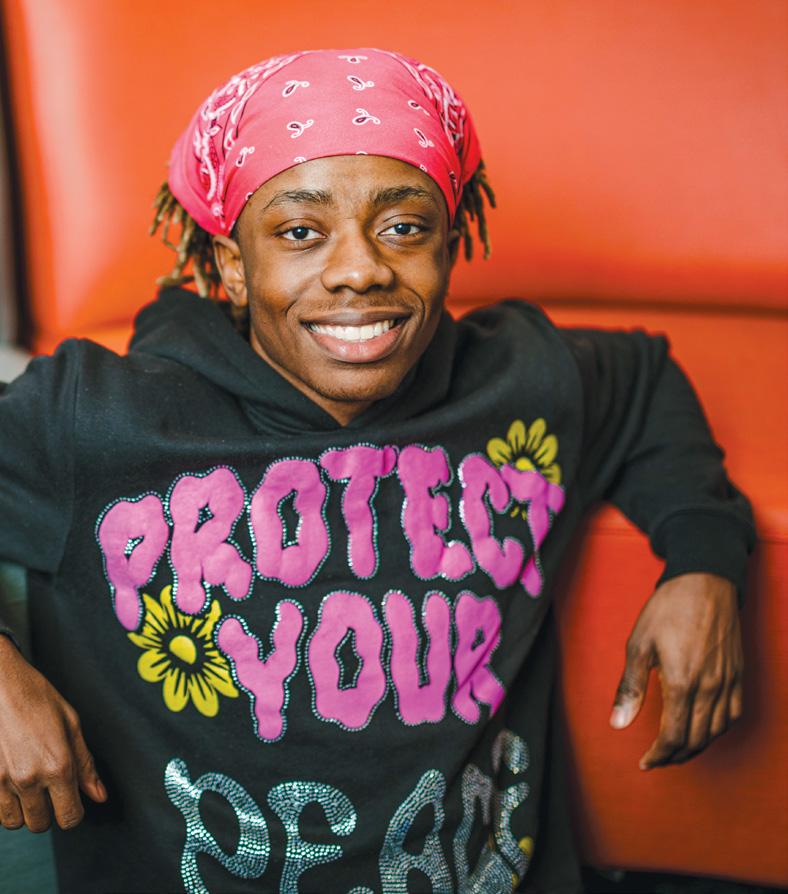
Coaches Award. “He understands all the values that the school and our team stand for: everything from equity to work ethic, holding each other accountable, being a supportive teammate,” Rourke said. “He leads with his heart and his brain and his whole self with everything he does.”
That includes in the classroom. Lee’s favorite subjects are math and computer science, which he plans to study in college. He’s also enjoyed trying new things, like a theater design course in 9th grade. “I’ve had a lot of classes here that I wouldn’t have imagined taking had I stayed home,” he said.
This spring, Lee took the Spanish IV service-learning class. Students develop lesson plans and then travel each week to nearby Gill Elementary School to teach younger students
the language through songs and games. “They’re very energetic, to say the least,” he said with a laugh. “Working with them has been fun — just to see their faces as they’re learning a new language.”
Lee appreciates NMH’s focus on creating a supportive environment for students. “It’s really important for me to feel safe to ask for help. And the teachers here definitely helped me be comfortable with that,” he said. That includes his advisor, Wendy Young, who helped him develop his academic plan and keep on top of his work from home while recovering from his injury.
“NMH creates this network,” he said, “starting with your advisor and even your dorm parents and down to your RLs,” student resident leaders who serve as mentors and liaisons between other students and faculty.
“He leads with his heart and his brain and his whole self with everything he does,” says Jamie Rourke, Lee’s coach.
Indeed, the RLs in Lee’s 9th-grade dorm helped him adjust to life at NMH, from guiding him toward extrahelp sessions to helping him draft emails to teachers. That inspired him to apply to become one himself, serving two years as an RL in Hayden Hall. “Creating that [positive] dorm atmosphere is a big part of shaping your experience here,” he said. “I wanted to have that influence on someone else coming in as a new student — being a part of making someone feel comfortable and welcome.”
The job isn’t always easy. “The hardest part is having to make those tough decisions, like when you see residents doing something that doesn’t necessarily align with school rules and have to navigate that situation and do what’s best for them and what’s best for the school,” Lee said.
Lee also grapples with big issues as a member of the Judicial Council, a group of students and teachers who assist the office of the dean of students on issues regarding discipline and student conduct. While the work can be challenging, he said, “It really has helped me connect more with NMH’s values and the importance of them.”
As he looked ahead to starting at the University of Miami in the fall, Lee felt well prepared by what he learned here, from leadership abilities to stress management to communication skills. “I’m really excited to take the values that I have learned here and apply them in my college journey,” he said. [NMH]
SPRING 2024 13

En Garde!
Competitive fencing comes to NMH
This year saw the launch of the NMH Fencing Club, building on the sport’s popularity as a P.E. option.
Coach Steve Bathory-Peeler began offering fencing as a P.E. class six years ago. “I fenced in high school — my dad was my coach — and after many years of thinking about it, I decided to offer a P.E. class to introduce kids to this great sport,” he said. “Because we have had some students with fencing experience who wanted interscholastic competitions, we started the club.”
The NMH club has joined forces with several local schools to form the Western Massachusetts High School Fencing League. In its first season, the NMH fencers took part in two competitions, winning in five out of six events at their very first event.
In addition to the club and class, BathoryPeeler hopes fencing will become a varsity sport at NMH in the coming years.

SEASON WRAP UP
NMH student-athletes gave their all this fall and winter, on the court, the mat, and the slopes, in the rink, and in the water.
Among the many team achievements: The boys’ Alpine ski team won both the Mount Institute Ski League and the New England Preparatory School Athletic Council championships, while the girls’ team took the MISL championship for the 12th consecutive year and finished in second place in NEPSAC.
The girls’ varsity basketball team was once again New England 8 Champions — that’s eight championships in a row. The boys’ varsity soccer and basketball teams, meanwhile, both made it to the NEPSAC semifinals.
The coed wrestling team continued its success in NEPSAC, where it won the Class A championship, and scored a sixthplace finish in the National Prep Wrestling Championships. The girls’ team took second place in its NEPSAC division. In addition, both teams finished second in the New England Preparatory School Wrestling Association.
On the boys’ varsity swim team, Wyatt Amos ’25, Matthew Hui ’24, Connor Marshall ’25, and Chris Sparrow ’25 set a new school record in the 200-meter medley relay, with a time of 1:40.
In addition to the many team accomplishments, numerous individual NMH athletes were named as all-stars and MVPs and received all-conference recognition. And, of course, behind every great studentathlete there’s a supportive, encouraging coach — like Charlie Malcolm, NMH’s longtime boys’ varsity soccer coach, who received the 2023 New England Prep Soccer Coach of the Year award from the United Soccer Coaches Association. This year, Malcolm notched his 200th win at NMH.

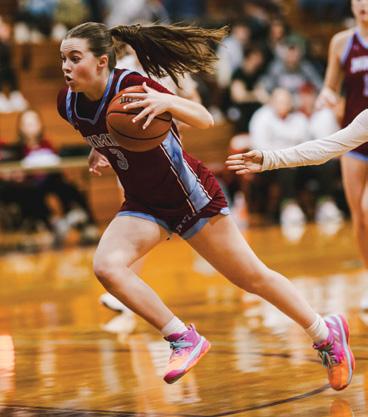

14 NORTHFIELD MOUNT HERMON MAGAZINE CAMPUS NEWS ATHLETICS
PHOTOS: MATTHEW CAVANAUGH, TONY DOWNER, RISLEY PHOTOGRAPHY, LINDSEY TOPHAM
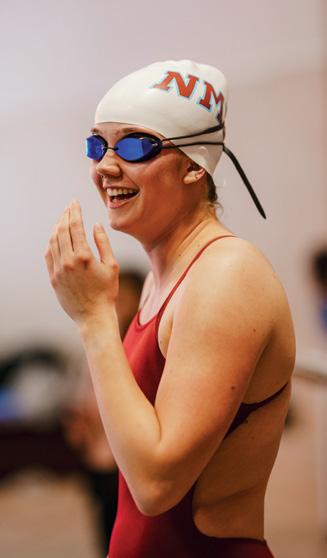
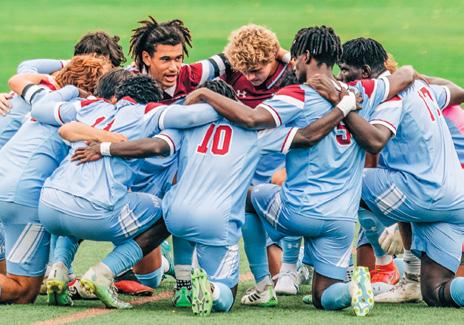
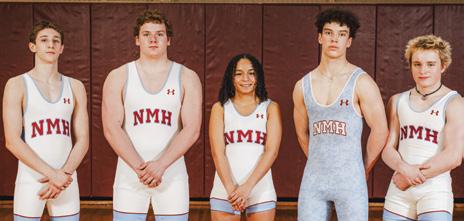
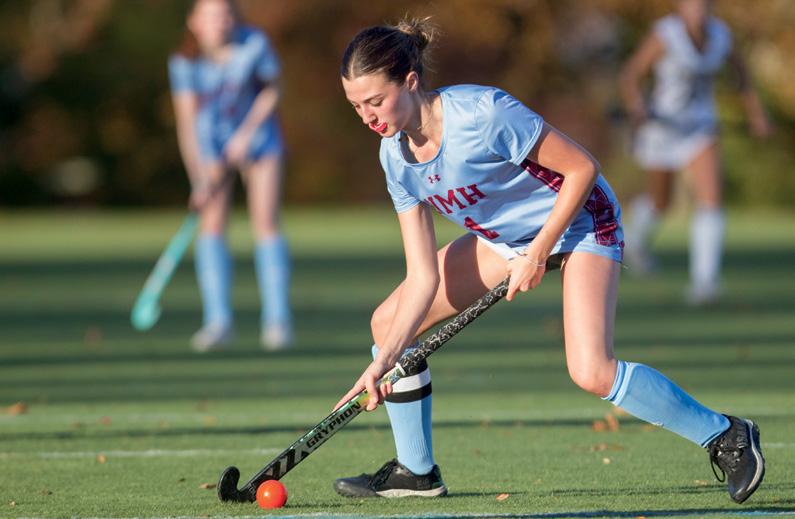


NEW TO THE TEAM
The athletics department announced several new coaches this school year, including a promotion from within the coaching staff.
Jake Bennett, head coach of the boys’ varsity ice hockey team, previously served as associate head coach at Kent School. He is co-owner and president of hockey operations for All-American Prospects and a scout for the Waterloo Blackhawks of the U.S. Hockey League. He also works in the advancement office as the assistant director of annual giving and athletic engagement.
Trevar Haefele leads the boys’ varsity lacrosse team. He has worked at Bowdoin College, Bates College, and Binghamton University, coaching 20 All-Americans and receiving several coaching awards. Off the field, Haefele serves as an assistant director in the NMH admission office and as dorm staff.
Strength and conditioning coach Kerem Posacioglu, a former professional windsurfer, has designed fitness programs for youth at Central City Boxing and Barbell and for the Springfield Fire Department. A graduate of Ohio State, he holds a master’s degree from Springfield College.
Kelsey Roberts was named head coach of the varsity field hockey team after two years as assistant. She has worked in several summer programs, including the Revolution Field Hockey Camp at NMH. Roberts served as captain at Keene State College and helped lead the field hockey team to an NCAA tournament appearance and three conference championships.
Grace Sokolow, head coach of girls’ varsity soccer, has coached at Chicago State University, ColbySawyer College, Finlandia University, and Austin College. She’s worked with the New Hampshire Olympic Development Program and is a graduate of the NCAA Women Coaches Academy. In addition to coaching, she is an athletics assistant and dorm head.
SPRING 2024 15
FIRST PERSON
“Why Quit When You’re Only Getting Started?”
A reluctant athlete embraces the bumps, the victories, and the camaraderie of being on a team
BY ABIGAIL GEORGES ’26
Before NMH, I wasn’t a sports person. At the beginning of 9th grade, I tried out for three sports, but none felt like a good fit. Then, in the spring of 2023, I tried the outdoor team.
Joining the outdoor team, my main concern was how I’d fit in the team socially. We went on bike rides by group, and no one I knew was in mine. An anxious feeling set in — a feeling that wouldn’t last very long. Despite a lack of familiarity, an ease set in after I learned that it wasn’t a competition team.
The outdoor team’s activities are whitewater canoeing and road biking. Whitewater canoeing is one of the most terrifying and exciting things I’ve experienced. During my first rapids, I crashed, sobbed, and screamed — I was petrified. I can confirm now that I would do it all again to be on the team.
As far as anyone knew, I wasn’t coming back, but I realized: Why shouldn’t I? Aside from not wanting to give in so early, a big reason why I stayed was Dory Hindinger ’24. Dory is a determined athlete whom I will always admire. She treats rapids like a short ride; I wanted to be able to do that. Dory’s a real-life Barbie, courageous and accomplished. I know she makes mistakes, but she never makes them seem detrimental — she knows it’s part of the journey and makes sure we know it, too.
In the fall of 2023, when I joined the mountain biking team, Dory was a big part of that decision. She cheered for me like I was Usain Bolt when I was really in last place. Dory helped me realize that it is part of life if I fall, crash, cry, or scream. Why quit when you’re only getting started? I strive to do for someone else what Dory did for me.
The teams I’ve been on at NMH have done nothing but lift me. The varsity mountain biking team believed in me when I wasn’t 100%. My biggest cheerleaders have been Sarah Olson ’26, one of strongest female athletes I know, and Will Johnson ’24, Grady Miller-Foulk ’25, and Nate Johnston ’25, three solid riders and hilarious teammates. In the first race that I placed in the top three finishers and made it to the podium, they cheered and chased me the whole way up a tough hill that was killing me — because that’s what we do. My coaches, Steve Allison, Katie Simpson, Michelle Hurley, and Tim Relyea, gave me something I don’t think I’ll ever lose as long as I live: a drive to try. The seniors on the mountain biking team gave me the “This Barbie Breaks Bikes” award because I did; I will break things and mess up, but never will I throw in the towel.
This winter, I tried out for the junior varsity girls’ ice hockey team, with a limited background in the sport. I made the team — something I couldn’t have done without the mindset that the mountain biking and outdoor team helped me adopt. (Shout out, GJV Puck!) Sports at NMH have given me so much, and I hope in my time I’ll be able to return that.
Abigail Georges is a sophomore from Florence, Massachusetts.
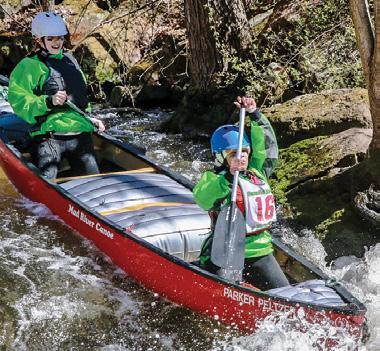
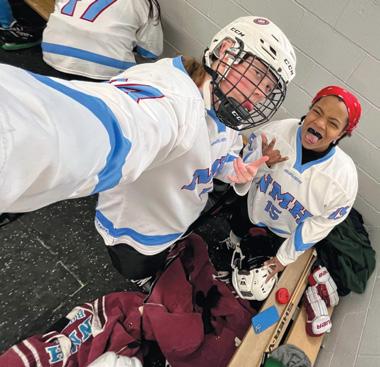
16 NORTHFIELD MOUNT HERMON MAGAZINE CAMPUS NEWS
PHOTOS: MATTHEW CAVANAUGH, RICH TANGUAY, SUBMITTED PHOTO
Georges’ experience on the outdoor team inspired her to take up a new sport: ice hockey.
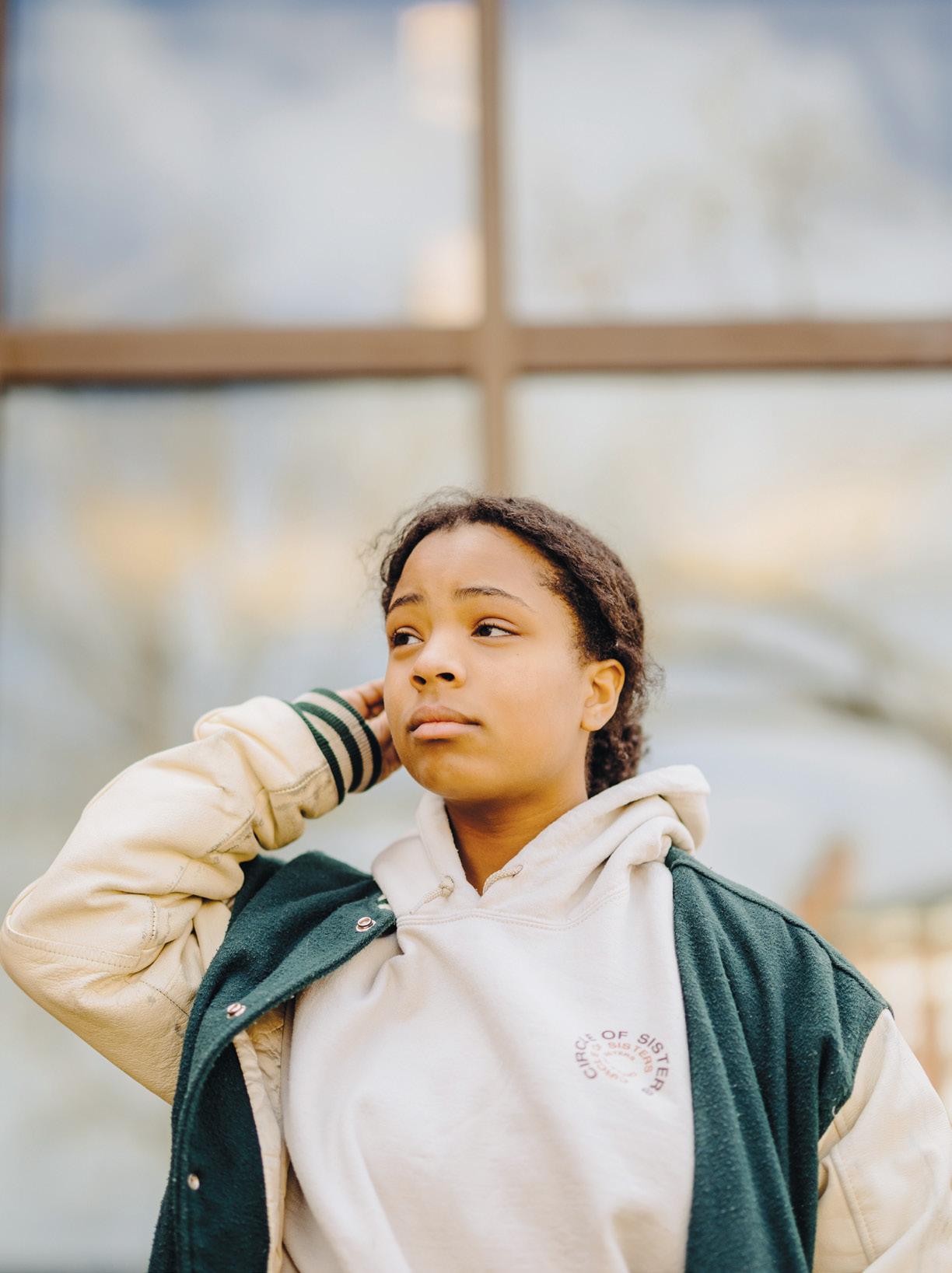
“I crashed, sobbed, and screamed — I was petrified. I can confirm now that I would do it all again.”
Farming for the Future
New director Nancy Hanson is leading NMH’s farm at an exciting moment of change
BY JAMES HEFLIN

GROWING UP on a dairy farm in Connecticut, Nancy Hanson was certain about one thing: “There was no way I was gonna be a farmer.” The work was too hard, the hours too long, and the pay too low.
Then, in high school, she took a career-aptitude test. The job she was best suited for, according to the results: farmer. Number two: teacher. “I laughed and threw it in the trash!” she recalls.
But the test turned out to be on the mark — to the benefit of many students over the years. Hanson did, in fact, go on to a career in farm education, last year joining Northfield Mount Hermon as director of the campus farm. In that role, she oversees farm operations, which includes growing produce and flowers, tapping maple trees to make syrup, and pressing apples for cider.
Hanson also supports the farm’s crucial educational mission. For some students, that means doing their workjob there, helping grow the food that ends up feeding their classmates and teachers in Alumni Hall. “It doesn’t matter who you are — you
work as part of your education, and you contribute to your community,” Hanson says of the workjob program.
The farm also serves as a lab of sorts, with classes from across disciplines benefiting from immersive experiences in everything from science to the humanities. That includes the innovative new Farm Semester program, which combines classroom coursework with hands-on farm work in two full-credit, linked courses: the Science of Farming and Reading the Land, an English course.
These farm-based academic pursuits are an essential part of NMH’s commitment to teaching students about the importance of environmental stewardship and healthy food systems. On the farm, students learn about and participate in agricultural strategies that are sustainable and show respect for the land.
“The farm is an investment,” Hanson says. “We want [students] to do great things, and here are the resources to do that.”
HANSON MADE a few stops on her path to farm education, first studying ornamental horticulture at the University of Connecticut, then working as head gardener at a 30-acre estate on the north shore of Boston, where she tended formal gardens, trees, and shrubs. But it was the estate’s vegetable plot that captured her heart. “I wanted to spend all my time in that quarter acre,” she says. “The flowers were pretty. The view was gorgeous. But I wanted to grow food.”
Hanson left the estate and applied her education and experience to growing organic food. “If you understand the science behind how soil, plants, and animals work, you can figure things out as you go,” she says. That’s a vital skill in farming. “On a farm, every day is different, and every farm is different.”
Her next job brought her to the Hampshire College Farm. “I said I’d do it for a year, then start my own farm. Twenty-four years later, I was still at Hampshire. I’d worked my way up to be farm director.” She’d also fallen in love with farm education.
“I really enjoyed the teaching aspect, helping the students who worked on the farm,” she says. “Just when I thought I had figured everything out, a student would come along and ask me a question that I could not answer. So we would have to go find the answer together. I guess that high school test wasn’t all wrong.”
AT NMH, Hanson is helping shape the future of a beloved part of campus life. Since its earliest days, the school has had a farming operation, which has long served as a site of learning as well as work. At the moment, the farm no longer has animals, after the recent death of Shorty, one of its draft horses, and the retirement of its other, Belle. But other things remain the same, like the maplesugaring operation, the cider press, and outdoor plots for growing vegetables and flowers. Hanson expects to reintroduce some livestock in the near future.
18 NORTHFIELD MOUNT HERMON MAGAZINE CAMPUS NEWS
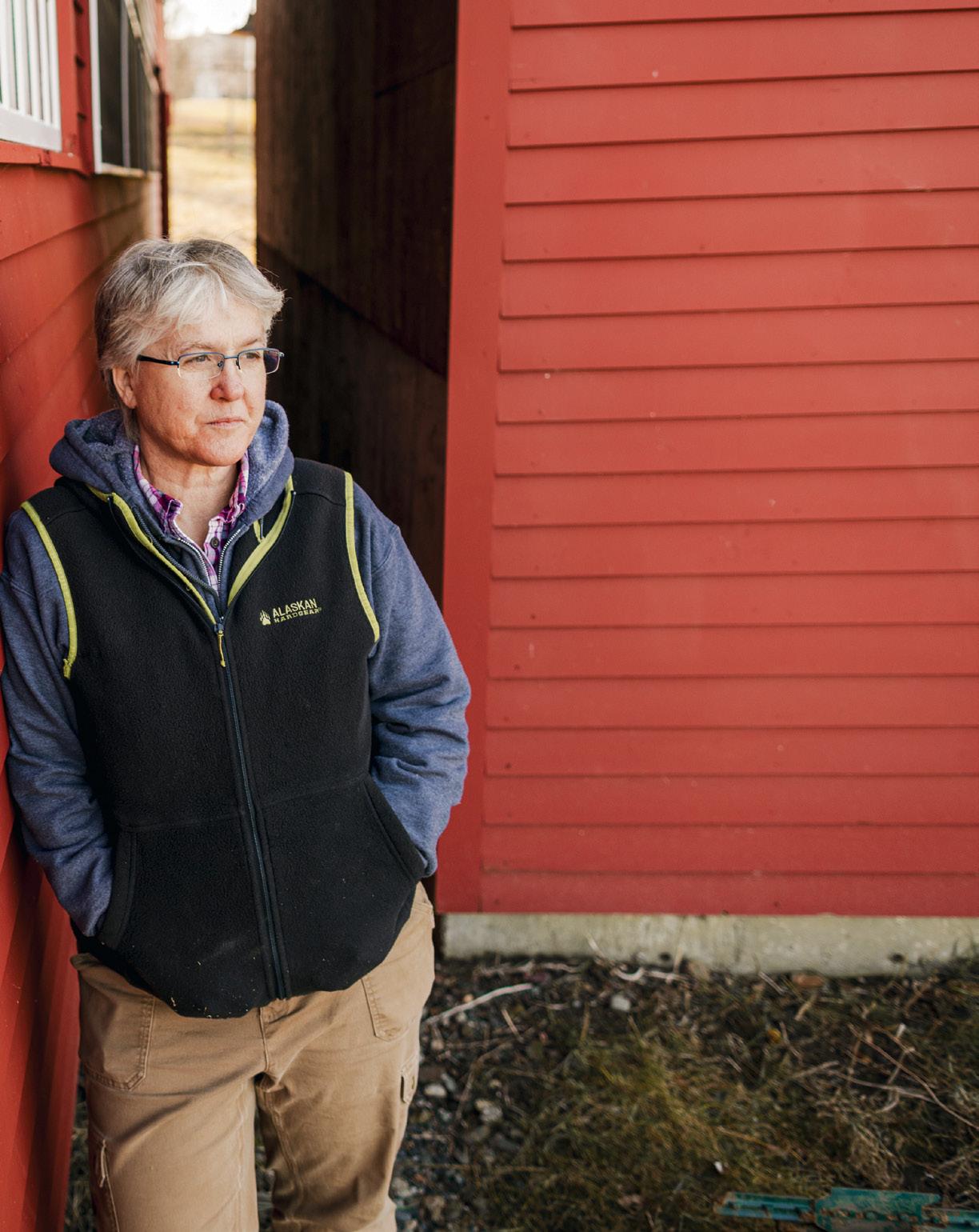
“The farm is an investment. We want students to do great things, and here are the resources to do that.”
In 2021, the farm received a major investment in the form of a gift from NMH trustee Theresa Jacobs ’10, whose experience working on the farm as a student inspired a lifelong interest in agriculture. The gift was earmarked for the development of the Farm Semester program, construction of a farm classroom building, expansion of the workjob program, development of partnerships with local farms and businesses, and expansion of courses that use the farm to teach about environmental stewardship.
“The farm is at a bit of an inflection point,” Hanson says. “Here’s where it’s been, so now where should it go? … How do we honor our history but also expose students to the kind of agriculture that’s going to feed them in the future?”
James Heflin is a writer and editor based in western Massachusetts.
SPRING 2024 19
PHOTO: MATTHEW CAVANAUGH
FAREWELLS
Expressing gratitude to cherished members of the community
This summer, the NMH community will say farewell to two longtime and cherished members: Dean of Enrollment Claude Anderson is retiring, while Dean of Equity and Social Justice Martha Neubert is leaving to explore new opportunities.
Anderson came to NMH in 2008 and co-founded the Advancing Scholars and Leaders program, now known as the Mary Annette Anderson Scholars Program (no relation). Over the years, he provided guidance to students in the Transition Year Program (TYP), served as host and mentor for Afghan students fleeing persecution by the Taliban, and served as an advisor for the Spanish and Latin American Student Association. His wife, Terri Anderson, has also been an important part of the NMH community, partnering with Claude in supporting the TYP and Afghan students. She, too, will be retiring after a career as a dedicated special education teacher at a local public school and a volunteer working to bring diversity into the elementary schools’ curriculum. The Andersons’ youngest son, Jordan, graduated from NMH in 2011.
Neubert joined NMH’s history department in 2005. In 2016, she was named dean and director of the Office of Multicultural Affairs, where her work focuses on social justice initiatives and working to build an inclusive campus culture. She has served in many other roles, including dorm parent, advisor, coach, and affinity-group advisor, as well as NMH parent: Her daughter, Isabelle, is a member of the class of 2025. Neubert and her spouse, Metta Dael, NMH’s director of international admission, also have a preschooler, Ava.
At NMH, the adults on campus are much more than their official job descriptions — they engage with the community in many ways, as educators, colleagues, coaches, leaders, advisors, mentors, and friends. These departing members of the community exemplify what it means to embrace the school’s mission in all their relationships across campus, every day.
We asked two alums to share their personal stories of how the Andersons and Neubert supported and helped shape them — during their time at NMH and well beyond.
— Maureen Turner
Claude and Terri Anderson
Guiding lights for a student far from home
BY FATIMA SAIDI ’13
In the scorching August of 2012, as a 16-yearold from Dasht-e-Barchi, Kabul, Afghanistan, I embarked on a life-altering journey that traversed three continents and two oceans, landing me at Northfield Mount Hermon. As I stepped onto the grounds, a whirlwind of emotions — fear, hope, homesickness, gratitude, confusion — swept through me. During those moments, I encountered Mr. Claude, a figure who would be not only a mentor but also a guiding light in my life.
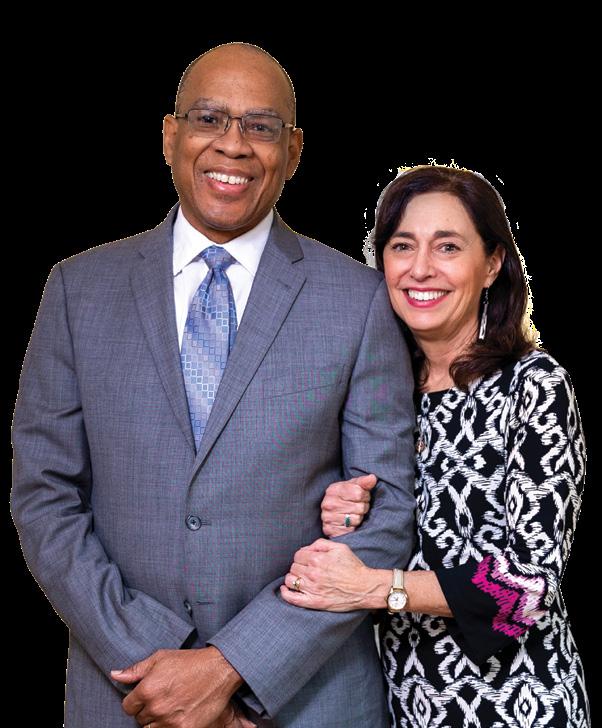
CAMPUS NEWS 20
PHOTO: STEPHANIE CRAIG

I still remember the day I met him; he extended a warm greeting: “Hello, I am Claude.” In my attempt to show respect, I replied hesitantly, “Hello, Mr. Claude. It is very nice to meet you.” That evening, I also met Terri, a soul with a heart from the high heavens.
One of my earliest memories that I can vividly recall is of Mr. Claude helping me carry my two large and heavy suitcases, filled with dresses that my mother had lovingly handmade, to my dorm room. As we walked, I shared stories about the dresses and my mother. It was a symbolic beginning of a relationship that would shape my journey at NMH.
As classes unfolded, challenges arose in English, math, and sports, prompting frequent visits to Mr. Claude’s office. In that sanctuary, I discovered a creative outlet in clay playdough, molding flowers, cities, and people. Beyond art, our conversations delved deep into the world, my childhood, aspirations, and politics, forming a bond that transcended the confines of NMH. When I left NMH for Bates College, it didn’t diminish Mr. Claude’s influence. He and Terri continued as steadfast mentors, guiding me through the complexities of college life. Weekly conversations became a lifeline as I navigated class choices, major decisions, and the prospect of studying abroad. Their wisdom played a pivotal role in shaping my academic journey and career path. They were even the first to meet Topher, my now-husband.
Post-college, their guidance remained a cornerstone in my decision-making process, guiding me through career dilemmas and life’s twists and turns. Their patient listening and thoughtful advice provided the confidence to face uncertainties head-on and survive
The Andersons were the first to meet Fatima’s new boyfriend, Topher — and later celebrated with the couple at their wedding.
applying for asylum after college and going through COVID-19 days.
One of the darkest days of my life was when Kabul fell to the Taliban on Aug. 15, 2021, marking a harrowing period. Amid the chaos, Mr. Claude and Terri extended a comforting hand, asking, “How can we help?” Their genuine concern became a source of solace in uncertain times. Multiple daily calls reassured me that I wasn’t facing the unknown alone.
After five days, my family finally made it to Quetta, Pakistan. Mr. Claude and Terri were the first people I called to express relief and joy following the news of my family’s survival, having crossed the border to Pakistan. The remarkable twist in the tale was the scholarship they facilitated for my siblings, Zahra ’26 and Masood ’25 — a beacon of hope in the sea of darkness. Their sympathy extended further, supporting two other Saidis to rebuild their lives post-crisis, showcasing individuals’ impact in adversity.
Expressing my gratitude feels like pouring warmth and appreciation into these words. From immediate response to ongoing support, their actions have left an indelible mark on my life. May the sun and the moon shine with kindness upon them and their loved ones, carrying the weight of my deep appreciation for their kindness, compassion, and unwavering support during one of the most challenging periods of my life.
Fatima Saidi ’13 is the national campaign director for the National Partnership for New Americans’ We Are All America campaign. She lives in Maine with her husband, Topher.
SPRING 2024 21

Martha Neubert
Empowering students to use their voices
BY KESHAWN TYRIQ BOSTIC ’17
In 2021, I became a full-time teacher with my own classroom for the first time, and the first thought that crossed my mind on my first day was “I hope I can be as great as Martha.”
Martha Neubert is the kind of educator that every student deserves. I use the word “educator” and not “teacher” because Martha’s work goes far beyond the classroom. In truth, the word “educator” may not be strong enough. Martha is nothing short of an icon.
Trailblazer. NMH legend. Her name brings back memories for generations of students. Martha made students who lived in the margins of the NMH community feel seen and heard. She was our unapologetic advocate, and we knew she always had our back. She is synonymous with NMH itself for students who had the privilege to learn from and work alongside her.
My first experience learning from Martha came during the fall of sophomore year, in HUM II. As a self-proclaimed history nerd, I was excited to sit in a classroom led by someone who looked like me. But it went deeper than melanin: Martha saw me for who I was. A strong-willed kid trying to find his voice and his place in the world. Martha empowered students to speak their minds, even if the thoughts were incomplete. She guided our nascent ideas as they became clearer and stronger. She encouraged us to disagree and debate respectfully. And she did it in cargo shorts and a hoodie, and with a permanent smile.
At the beginning of my junior year, Martha became the dean of equity and social justice, and our relationship shifted from student-teacher to advisor-advisee. Our work was no longer done in Blake classrooms between bites of snack-bar bagels or bookstore Pop-Tarts. The work became a study hall in Martha’s Social Hall office. It became drawn-out rants about feeling slighted or treated unfairly on campus. It became emotional debates amongst students that Martha constantly mediated.
When I think about my junior year, I reflect on the small group of Black students who all leaned on Martha day in and day out. As an educator myself, I now understand how heavy the weight of teenage emotions can be on an adult. There are days when I don’t have the bandwidth to hear another heartbreaking story about what my students go through when they leave my room. There are days when I want to tell them, “I just can’t do it today.” But then I remember my goal — “I hope I can be great like Martha” — and I open my ears and my heart.
My senior year was the culmination of years of work and growth Martha and I had completed together. That was the year in which I spread my wings and used the voice Martha helped me find. It no longer felt like I was coming to her just to vent or be comforted. I came to her to put plans into action. I recruited people to my ragtag nameless bunch, and Martha was our de facto advisor. We set out to make changes on campus. It was during this year that we organized a campus wide blackout, asking the community to wear black in remembrance of victims of police brutality. We organized a Black Lives Matter
22 NORTHFIELD MOUNT HERMON MAGAZINE CAMPUS NEWS
PHOTO: MATTHEW CAVANAUGH
“My senior year was the culmination of years of work and growth Martha and I had completed together. I spread my wings and used the voice Martha helped me find.”
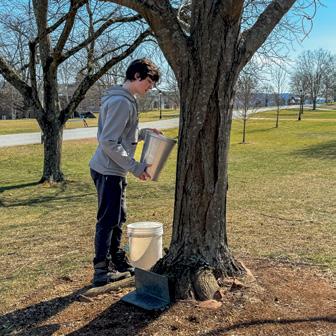
Signs of Spring
rally, a screening of the film “13th,” campuswide open discussions, and Black History Month programming and a library display. She empowered us to use our voices to do what we felt was right.
If Martha had not been there, if she had not taught that HUM II class, if she had not provided an ear to listen and a shoulder to cry on, none of these events would have come to fruition. These events were the culmination of years of support that Martha provided to me and my peers who lived in the margins. It is now 2024, seven years after I left the hills of NHM, and I still hear a voice telling me to be as great as Martha every single day.
Keshawn Tyriq Bostic teaches English and logic at a public high school in Dallas and is an advocate and mentor for young people. He majored in American studies and educational studies at Dickinson College, then received a master’s in education from The Johns Hopkins University.


Maple sugaring is a harbinger of early spring in northern New England. On the NMH campus, the silver buckets and tubing systems that are tools of the trade appear sometime between late February and early March.
Sugaring has been an integral part of the school’s farm program since 1978, when students and farmers produced eight gallons during the inaugural season. Now, with more students involved and a powerful reverse-osmosis filtration machine in the sugarhouse, a typical season can produce hundreds of gallons of the delicious amber syrup.
While some lucky students participate in sugaring through classwork, it’s mainly workjob students who help get the job done in the prime sugaring weeks. Over spring break, day students can sign up for sevenhour shifts working on the farm. This year, five students worked together cleaning and prepping equipment, emptying buckets and vats filled with gallons of sap, and overseeing the filtering and evaporation process in the sugarhouse.
This was the second year that Anthony McNamara ’26 participated in sugaring. “Seeing the sap we took from trees at the beginning of the week turn into syrup that other people can enjoy is just so rewarding,” he said. “I was also able to learn skills across the farm while we weren’t sugaring.”
For Farm Director Nancy Hanson, the experience of watching the students take part in some downtime was satisfying. “One day the students were sitting around the evaporator and periodically stoking the fire,” she said.
“We had a group of teenagers sitting around in a circle, playing word games with each other, not a phone in sight. A small thing, maybe, but oh so rare these days.”
— Shelley Lawrence
Treat yourself to a bottle of NMH syrup at nmhschool.org/ nmh-stores.
SPRING 2024 23
Bostic as a student (left) and a teacher (right)
COOL CLASS
Now We’re Cooking
In Culinary Adventures, students connect nutrition, cooking, food systems, and service
BY SHELLEY LAWRENCE
When science teacher Clare Knowlton developed the new cocurricular course Culinary Adventures: Learn to Cook and Understand Food Systems, she knew she wanted to offer students fun, hands-on cooking experiences. The curriculum outlined plans for pizza-making at a local co-op and service-oriented trips to a supermarket and a community-meal site, as well as time for conversation, documentary screenings, and a visit to the NMH farm.
Knowlton assumed that students would be excited about the cooking classes but wondered if they would bring the same energy to other aspects of the curriculum. “Students will definitely have fun with the pizza-making,” she said. “But for me, it’s important to convey that food is a pretty biased system with a lot of issues to it. So one of my main goals for the course is that they begin to consider where their food comes from when they are handed a plate.”
Culinary Adventures is an example of the kind of experiential, interdisciplinary learning that NMH prioritizes. While nutrition, cooking, and service are all key components of the curriculum, the class asks students to draw connections between the things they learn. “I want students to become more conscious consumers of food and to think beyond the question of what they like to eat,” Knowlton said. Students kicked off their field trip series on NMH’s farm to talk with Farm Program Director Nancy Hanson

and farmer Emma Lindale ’17. The farm grows an array of produce for Alumni Hall, including superfoods like mesclun greens, Swiss chard, kale, and broccoli. Knowlton wanted her students to have a foundational understanding of how to plan and manage a kitchen garden. During the visit, Hanson focused on how to cultivate ingredients for salsa, because, she said, “You can grow every ingredient you need to make salsa.”
Another week, the students visited the Brattleboro Co-op to learn how to prepare dishes that were new to some of them: marinated raw tuna and rice poke “bowls” made in paper cups, and pounded, chewy rice cakes
called mochi. Lisa Nichols, the co-op’s upbeat education coordinator, walked students through each step to ensure the food was both safe and flavorful, from sanitizing their prep surfaces and hands to chopping garnishes to adding soy sauce and sweet rice wine vinegar in just the right amounts.
Nichols talked to students about the role of fats, protein, and carbohydrates in the body as she doled out spoons and wavy chopping tools.
“Let’s talk about good sources of healthy fats,” she suggested as the room filled with the smell of chopped scallions. Fats can support healthy brain function, she explained, before asking students to offer examples of
24 NORTHFIELD MOUNT HERMON MAGAZINE CAMPUS NEWS
PHOTOS: SHELLEY LAWRENCE
Below: Making poke bowls. Right: Buying snacks for a communitymeals program.
good sources. When it came time to taste their work, most students opted to try the fish, nodding their heads in approval as they ate.
Later in the term, students returned to the co-op to make pizza, crudités, and ranch dressing. “It was a joy to witness the students’ culinary sense, taste, and aesthetics,” Nichols said. “They were so eager to cook. I sent them back to [NMH] with information about teens’ protein requirements, wanting to fortify them for exciting lives ahead.”
In February, the class met by Zoom with two alums who’ve gone on to careers as celebrated chefs and restaurateurs: Seamus Mullen ’92, who started two restaurants in New York, Tetulia and El Comado (the latter was a finalist in 2011 for the James Beard Foundation Award for Best New Restaurant), and Natascha Sherman Hess ’96, chef and owner of Denver’s award-winning Ginger Pig restaurant. Mullen is also a cookbook author and an authority on health and wellness. His books, “Seamus Mullen’s Hero Food” and “Real Food Heals,” were inspired by his personal experience using food to alleviate symptoms of rheumatoid arthritis. Mullen is passionate about healthy eating. “When I was going through my health issue, this was not part of the conversation,” he said. “There is absolutely a direct relationship between how we eat and how we perform as humans.” The challenge is to recognize what’s truly useful and what’s a fad.
Nutrition is a prime consideration in Hess’ cooking as well. She often focuses on Chinese cuisine. Fried rice is her favorite dish to cook, and she uses ginger and garlic in many of her recipes because they’re delicious and support health. “I started to take self-care really seriously a few years ago,” Hess told students. She makes
time for things like acupuncture and exercise as well. “I wish I had known how important that was when I was younger.”
Hess’ central message to students was to find a profession they love and not be afraid to change course if what they choose doesn’t work out. “I wanted to make sure that no matter what I talked about, I left you with that,” she said.
These opportunities to talk and cook with professionals from different parts of the culinary industry resonated with students. Nina Lobo Tomiatti ’27 found the lessons about healthy eating especially interesting. “Some of [the speakers] told us how each ingredient would affect our bodies in a good way or a bad way,” she said. “I feel like we have learned a lot about nutrition.”
Another day, the class visited the Greenfield Stop & Shop for a “bonus bag brigade day trip,” where students were challenged to assemble nutritious, nonperishable snack bags while working within a strict budget. The exercise gave them a chance to put their newfound expertise to use and to practice the real-life skill of grocery shopping with a limited amount of money.
The students navigated the fluorescent aisles with efficiency as they discussed the merits and drawbacks of each item. Tomiatti’s group brainstormed over containers of nuts in the produce department before deciding to move to cheaper items in the snack aisle, where they debated the taste and price points of honey pretzels and protein bars.
Rae Ruben ’24 had already developed her grocery-shopping skills before taking the class. “I’ve shopped with my mom a lot because I am a vegetarian,” she said. “This class has also taught me to cook some
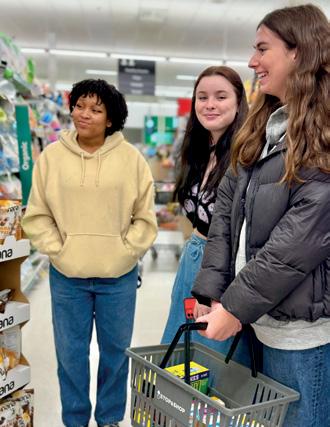
meat-based meals. I think that’s a skill I can use.”
After the shopping trip, the students returned to campus to decorate and stuff brown bags for distribution to local children by the Franklin County Community Meals Program.
While Culinary Adventures wrapped up at the end of the winter term, Knowlton hopes her students will be inspired to keep learning about cooking, gardening, foodways, and volunteer work. “I’ve been sending the students videos and recommendations for episodes of shows, podcasts, and links to shorter things that are less dense and academic or are more like popular media,” she said. “It opens the door to all the other great journalism and media about these topics. There’s a lot to learn about this.”
For Valerie Champagne ’24, the service trips and pizza-making were among her favorite parts of the experience. “There were a lot of cool lessons,” she said. “I learned a lot. I get to cook a lot more and have really been enjoying it.”
Ruben echoed her classmate’s take: “I enjoyed the mix between learning how to cook for yourself and doing volunteer work,” she said. “It’s been really enjoyable.” [NMH]
SPRING 2024 25
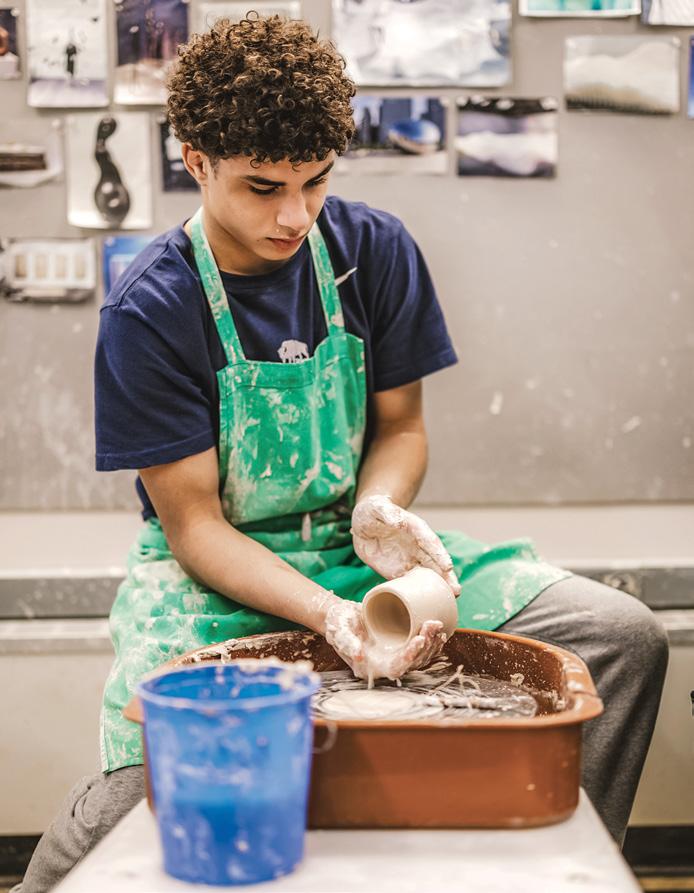
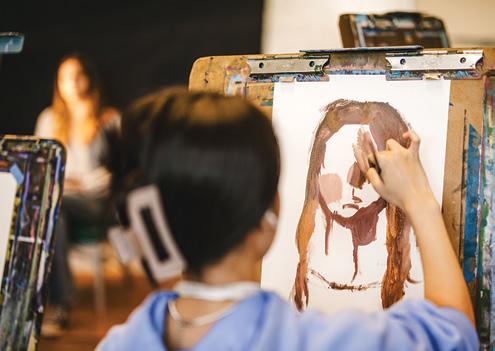
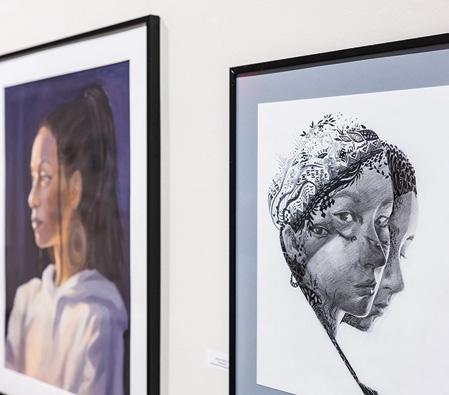
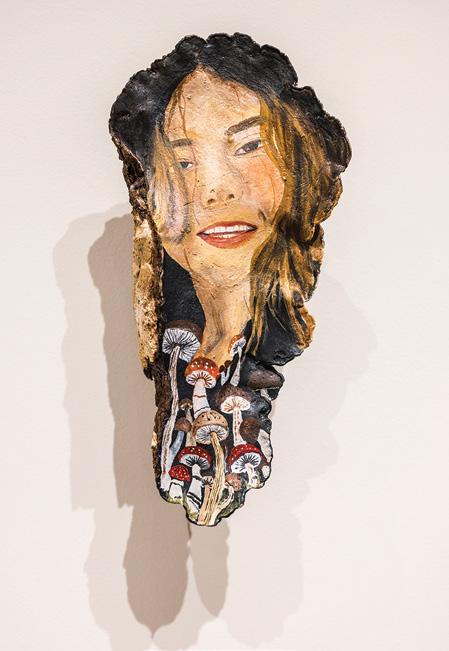
ART CLASS
Student artists flex their creative muscles in visual arts classes. Some of that work is displayed in the annual student art exhibit.
26 NORTHFIELD MOUNT HERMON MAGAZINE CAMPUS NEWS ARTS
PHOTOS: MATTHEW CAVANAUGH
One-Act Festival
Student directors brought nine plays to the stage of the Lois C. Chiles Theater during this year’s OneAct Festival — but they didn’t do it alone. This year, for the first time, the directors had the opportunity to collaborate with student costume, scenic, and lighting designers.
The festival directors selected their plays from the New Play Exchange, a database of 55,000 scripts by more than 12,000 writers. The exchange, said Theater Director Jared Eberlein, is meaningful to the experience. “The plays are written by living, breathing playwrights. The students have the ability to now work with these pieces created by people that we can actually reach out to.”
Cooperation is essential to each element of the One-Act Festival. Ben Liu ’24, director of the experimental “37 Scenes and a Watermelon,” said that face-to-face communication with Alvin Wang ’25, the play’s technical director, was critical. “It’s basically 37 scenes separated by lights up and lights off, so there’s many things to talk about, not only with my designers, but also with the stage manager, to get the timing correct,” Liu said. “I really have to communicate well.”
Jade Kong ’24, a self-described “magician of time management,” said that she wanted to choose a big, bold play for her directorial debut. “I came into the process thinking: I want to get the most out of this,” Kong said. She took on a 10-minute play with three cast members and five set changes — “which means that either I needed to get a lot of people [to] move the set constantly, or I needed to figure something out,” she said. “Luckily, I had Alvin, an amazing set designer who helped me figure something out.”
Kong’s costume designer, Lola Wiemeyer ’24, also helped her to realize her hopes for the play. “I’ve probably been in the costume shop for eight hours this week,” Wiemeyer said during production week. “But it’s made easier because everyone in the shop is so excited and really wants to connect with their director’s vision.”
Eberlein credits the success of the festival to the supportive ecosystem of the community. “Kids see it as a privilege to be able to have time to create things and to work on things like this,” he said. “I think that having both academic time to devote to this and friends in their dorms who can encourage them … is really important.”
Jasper Neff ’25, who directed the play “Two Yards of Satan,” agreed. “I’m realizing that I am capable of being in a position of leadership, of having this responsibility and seeing that I am creative and I do have good ideas,” she said. “I’ve gone from ‘Oh, no, I have to put on a whole play,’ to realizing ‘Oh — I can do that!’”
— Shelley Lawrence
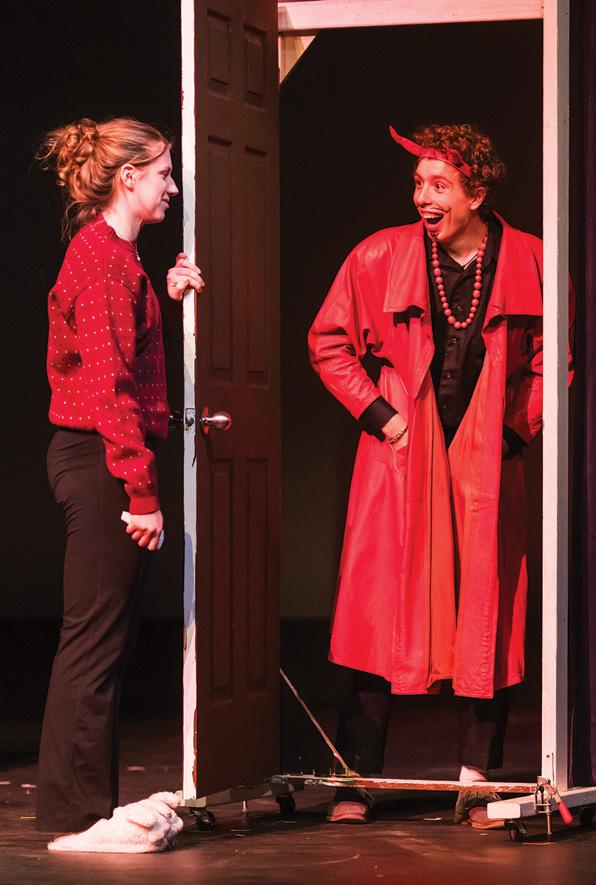
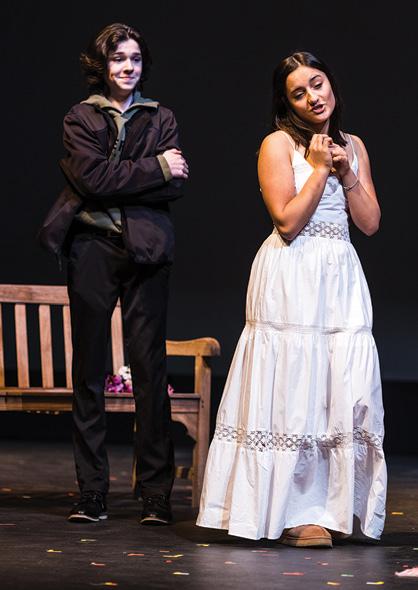
SPRING 2024 27
The One-Act Festival was a collaboration among student directors, actors, and costume, scenic, and lighting designers.
PERFORMING ARTS

28 NORTHFIELD MOUNT HERMON MAGAZINE CAMPUS NEWS
The NMH Dance Program’s winter concert, “Oz,” was inspired by the L. Frank Baum novel. Here, the Winkies express feelings of liberation after being released from the control of the Wicked Witch of the East.

SPRING 2024 29
PHOTO:
STEPHANIE CRAIG
FALL & WINTER PERFORMANCES
Putting on a Show
Every spring, as the NMH Theater Department wraps up its season, it’s tradition to tease the next season with an announcement of that fall’s first show. It’s always an exciting moment, but news of the fall 2023 musical blew the roof off the RAC: To the wild cheers and applause of students, Theater Director Jared Eberlein announced that the department would take on perhaps its most ambitious show yet: “Les Miserables.”
Last fall’s production of “Les Mis” was a triumph, from its transcendent singing and acting to its beautiful sets and costumes. But it was only one of the many times NMH student performers shined on stage.
Among the smashes this fall and winter: The beautiful, creative dance concerts “Interchange” and “Oz.” Exciting jazz performances, from a holiday concert to welcomed study-break shows in Schauffler Library. Moving a cappella, instrumental, and choral concerts, from the traditional and beloved Vespers to fundraisers for Big Brothers/Big Sisters and Lifepath, a nonprofit that serves local seniors. High-energy percussion performances, including a showcase featuring the NMH World Music Percussion Ensemble, the Vermont Jazz Center Latin Percussion Ensemble, and Jo Sallins & the Rhythm Queens. Impressive student-directed one-acts, along with the winter play, “10 Out of 12.” The NMH Pops Concert, featuring the Symphony Orchestra and Concert Band, in Alumni Hall — a highlight of the fall.
Here are just a few favorite moments from the fall and win ter performing arts seasons. What’s ahead for NMH student performers? Listen for the cheers coming from the RAC for a hint.
—Maureen Turner
See photos from all the performances at flickr.com/ photos/nmhphotos/albums.


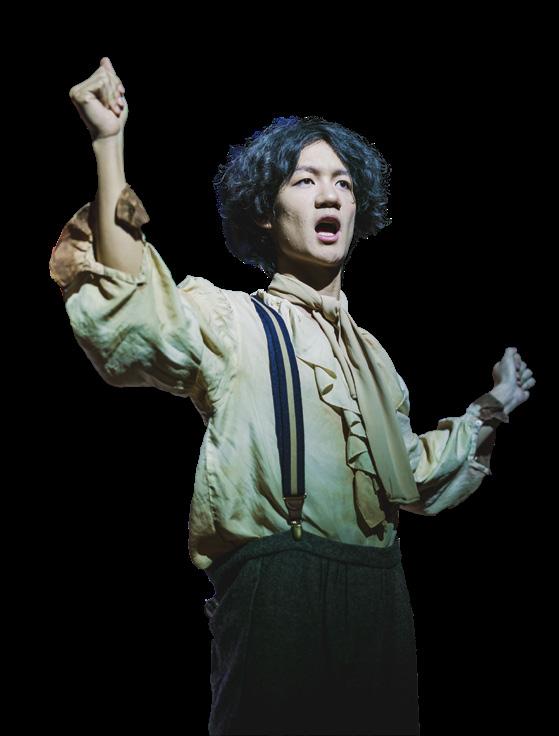


30 NORTHFIELD MOUNT HERMON MAGAZINE CAMPUS NEWS
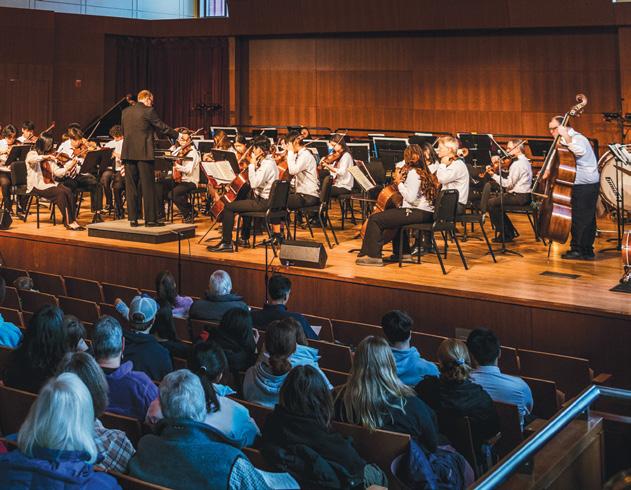


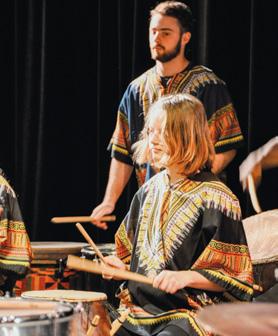


Visiting Artists
The Gallery at the Rhodes Arts Center was alive last fall, with exhibits by three visiting artists.
The season opened with an exhibit of paintings by Mwanga William (pictured), a Brattleboro artist whose work highlights the culture and nature of his native Uganda. Alum William Brayton ’76, whose work largely focuses on sculpture and drawing, shared his art in a show called “Torrent.” The fall semester closed with “Borrowed Light,” by multimedia artist Anna Hepler P’23, whose sculptures, prints, ceramics, and photographs focus on patterns and linear forms that shift unexpectedly.
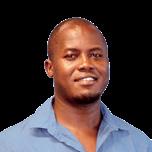
Supplementing the exhibits, the RAC Gallery Artist Engagement Program brings artists into the classroom to work directly with students. William, for example, spent two days on campus, working with students in visual arts classes; sitting in with the honors jazz combo, where he played drums; and meeting with NMH rowers to share his experience in the sport, including serving as head coach of the Ugandan National Rowing Team. Hepler visited a sculptural forms class, where she talked to students about the artistic process and how to explore authentic modes of expression.
“For many students, this was the first time they have been able to learn about the practice of art-making from a firsthand reference,” teacher Jamie Rourke, the Gallery’s director, said after Hepler’s visit. “Anna’s emphasis on the promise of keeping an open mind, her willingness to embrace surprise and to take risks, all helped to motivate and inspire the students to begin new projects with confidence and curiosity.”
Perhaps some of those students will find special inspiration in NMH’s art classrooms, as Brayton did during his time as a student here. “I found that I fit in a little better in the ceramics studio,” he recalled. “The art areas were always places of refuge for me. I hadn’t yet chosen it as a career path at that point, but hanging out in there influenced me.”
— Shelley Lawrence
SPRING 2024 31
PHOTOS: MATTHEW CAVANAUGH, STEPHANIE CRAIG, AURORA SONG
’26
The Possibility of Magic
Choral music teacher Alexandra Ludwig leaves room for the unexpected
BY JAMES HEFLIN
When Alexandra Ludwig joined NMH last fall as its new choral music teacher, she brought with her extensive experience as a conductor. But she soon discovered some of the ways that making music here is unique — starting with one of its most beloved traditions. “One of my favorite parts of the job is when the whole school sings together on Monday mornings,” she says. “Even if a student never joins a chorus, they get to experience that feeling.”
That communal sensibility is a key thread in how she talks about music. Ludwig first conducted a choir as an undergraduate at Smith College, before getting an MFA in orchestral conducting from Bard College. “I’ve done jobs from accompanying school choirs to conducting opera in New York,” Ludwig says. She’s worked in music in the Connecticut River Valley for a long time, too, including teaching at Springfield College, directing FluxEnsemble, and singing in the Illuminati Vocal Ensemble.
Ludwig sees her role as one of empowering performers. “There’s a balance,” she says. “I think about getting a group to a place where they mostly don’t need you as a conductor but then being there at the right time in the one or two places where they really do.”
This creates an interesting dynamic, Ludwig says. “There’s always a teaching element, but when it comes to the moment of performance, students become colleagues. You’re working with what they’re giving you, and vice-versa. It leaves the teaching relationship behind in some ways, and it becomes about what you’re creating together for an audience.”
Ludwig stepped into her role after the departure of the beloved Sheila Heffernon, who led the school’s choral groups for four decades. For Ludwig, the communal nature of performance at NMH has been key to making that transition easier. The long list of
performing groups keeps her busy: She directs the Concert Choir as well as two auditioned groups, the Select Treble Ensemble and the NMH Singers, and advises the school’s a cappella groups.
The first big job Ludwig took on in her new role? Helping bring the fall musical, “Les Miserables,” to the stage. “That was a lot,” she says, “but it was an unbelievable amount of fun also. And the students knocked it out of the park. They brought so much heart.”
Leading “Jerusalem” at all-school meetings in Memorial Chapel is just one way that Ludwig maintains and carries forward cherished school traditions. In the winter, she worked with student singers on Vespers, an annual performance that has taken place since the 1930s. In the spring, it was the even older Sacred Concert, first held in 1895, when students presented a concert of gospel hymns for school founder D.L. Moody.
In her work with students, Ludwig emphasizes the role of each individual. “In this community setting, the question is not: Are you a star?” she says. “It’s: How does singing in community make you feel? How do we build community through singing?
“What you contribute brings everybody else up,” she continues. “It works positively and negatively, so it’s important to have a group consciousness, to give up a part of your individuality to something larger than yourself.”
That’s very much in keeping with NMH’s commitment to education for the head, heart, and hands. “That’s what the performing arts are about,” Ludwig says. “They’re the synthesis of [and] the relationship between those three pillars. You’re processing that and sharing that out to the community.”
Key to that sharing, she says, is the “possibility of magic. Students have trained, learned the piece, gone over the technical things. All of that creates an opportunity for a moment of magic in performance they’re not in control of. That’s always something that might happen!”
James Heflin is a writer and editor who lives in western Massachusetts.
32 NORTHFIELD MOUNT HERMON MAGAZINE CAMPUS NEWS
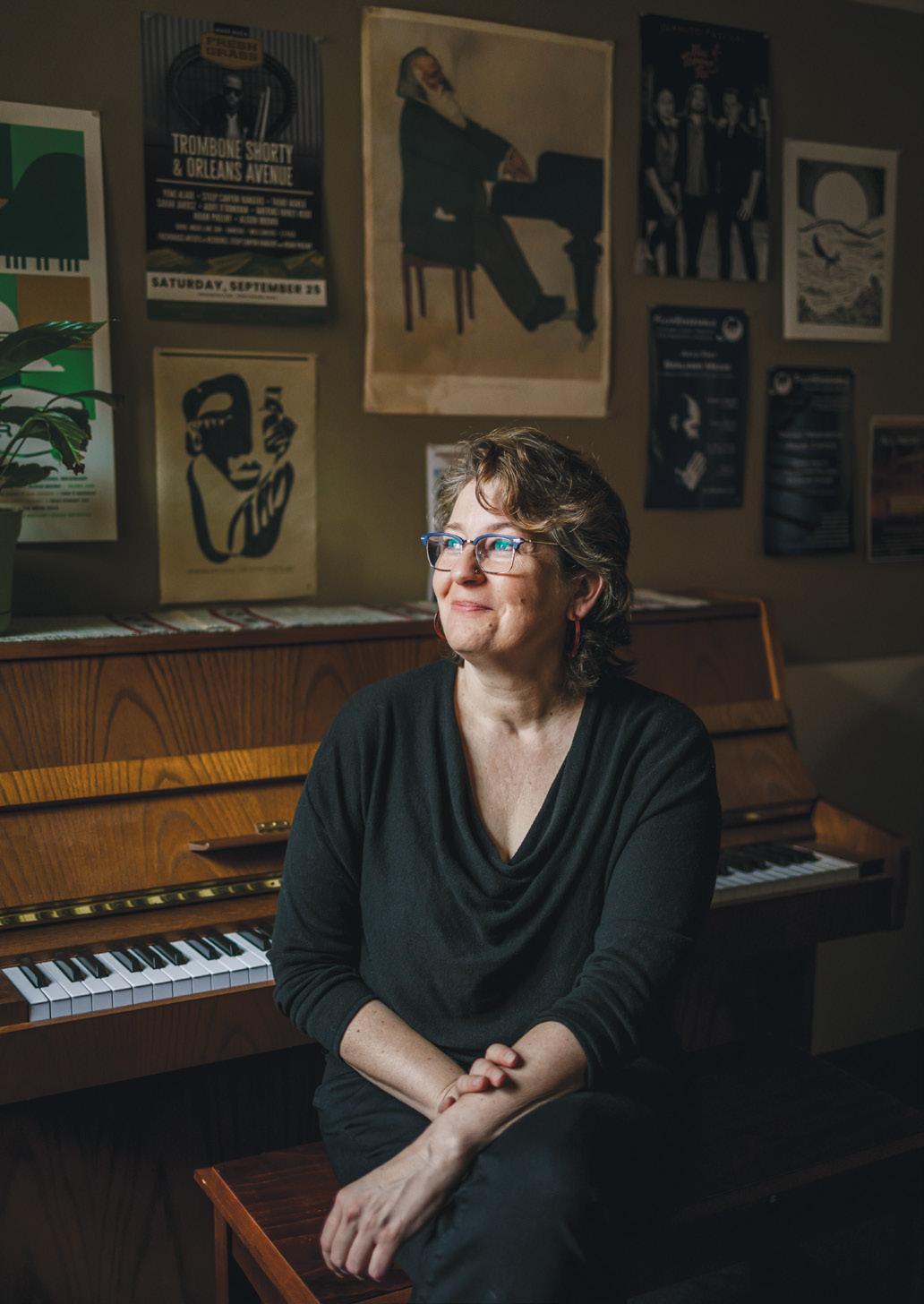
SPRING 2024 33 PHOTO: MATTHEW CAVANAUGH

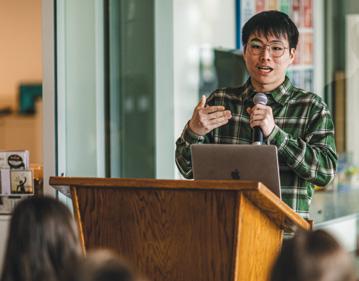


YOUTH CLIMATE SUMMIT
In February, more than 60 students from schools across the region convened in the Gilder Center for the Interscholastic Youth Climate Summit 2024, hosted by NMH student Ecoleaders.
“We should not let climate change define who we are,” Ecoleader Wilson Cheung ’24 said to the students. “We should let how we respond to climate change define who we are.”
Now in its second year, the summit was put together by the Ecoleaders with support from teachers Pete Sniffen, the campus sustainability coordinator, and Skylar McAlpin, the group’s advisor. David Newman P’27, a conservationist and former environmental lawyer with the Natural Resources Defense Council, served as keynote speaker. In his talk, Newman discussed the timeline of human impact on the environment and the evolution of the climate crisis. “The moment we are in is an inflection point,” he said. “The choices we make now will affect billions of human lives in the future.”
Students took part in workshops on topics including art and activism, sustainability in the private sector, energy policy, and natural solutions to the climate crisis. Consultant Sofia Assab ’17 led the “Sustainability in the Mainstream” workshop. “I believe that, as we move forward, every single company needs a foundation of sustainability,” she said. “Companies should not necessarily work the way they currently work, because it’s not working for the future of the planet.”
Students broke into small groups to dissect companies’ reports and then offer critiques. “I was amazed by the way each student immediately engaged with the exercise, coming up with solutions that were creative and truly change-making,” Assab said. “Though it was only six years ago that I was a student at NMH, the change in how deeply young people are thinking about the future is staggering.”
Digaunto Chatterjee P’25, a vice president at the New England energy company Eversource, led an “Energy Chain 101” workshop. “The conference was planned really well to draw out student engagement and drive toward actionable steps they can make by belonging to organizations within the school and by partnering with other schools,“ he said.
Sniffen agreed. “[The Ecoleaders] do things independently that adults do at other schools, like organizing and hosting conferences,” he said. “Young people really seem to understand that moving from individual action to collective action is important. They wanted to connect to other students in the movement and build a larger coalition beyond NMH.” — Shelley Lawrence
34 NORTHFIELD MOUNT HERMON MAGAZINE CAMPUS NEWS
PHOTOS: MATTHEW CAVANAUGH
Students from around the region gathered at the NMH climate summit in February.

Kulick ’81
AT THE OSCARS
“The Holdovers” wasn’t Northfield Mount Hermon’s only appearance at this year’s Oscars ceremony: Alum Jay Kulick ’81 was there for the 11th time in his role as a camera operator. “It never fails to be a thrill to be able to work on the granddad of all award shows,” Kulick said after the ceremony. But this year, he added, was especially exciting, given his alma mater’s connection to one of the nominated films. “[It was] so much fun to brag that I went to NMH.”
Indeed, Kulick credits his time at NMH with setting him on his professional path. “Little did I know that a chance opportunity to work with Lynda Plavin Fitzgerald’s dance company my first year at NMH would pique an interest in the Theater Department and eventually lead to a multi-Emmy-Awardwinning career,” he said.
On the Big Screen
NMH shines in “The Holdovers”
Spring break 2022 was an unusually busy one on campus: A few days after students and teachers departed for some welcomed rest, the campus was buzzing again, this time with a film crew, who, for one week, transformed NMH into the fictional Barton Academy.
Last November, the NMH community — and movie fans around the world — finally got to see the results of that work: “The Holdovers,” the Oscar-nominated hit about a teacher, student, and cook marooned at a boarding school during the holidays. The film won numerous prizes during award season, including an Oscar for best supporting actress for Da’Vine Joy Randolph.
The release of “The Holdovers” was cause for much celebration for current and past NMH community members, who thrilled to see scenes filmed inside Memorial Chapel and the O’Connor Health and Wellness Center, as well as long shots of students walking across a snowy campus.
That snow was genuine, if not local, revealed Rafaela Calicchio, NMH’s director of auxiliary services, who worked with the movie crew. “They brought in the snow, and it was real,” she said. “They staged the snow pile in the Bolger House parking lot and spread it between the chapel and Alumni Hall. They put down a white fabric and blew the snow onto it.”
While filming took place in only a couple of NMH buildings (other schools, including nearby Deerfield Academy, were also used), the crew utilized other parts of campus as well: Alumni Hall for staging, the Blake Student Center for wardrobe, and the parking lot outside of Alumni for parking the stars’ trailers, Calicchio said.
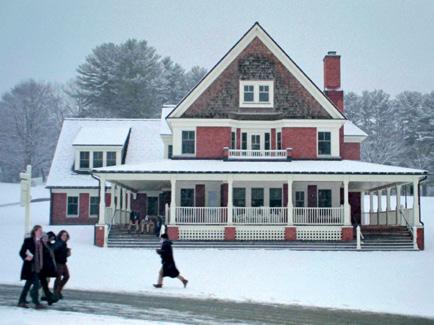
Once “The Holdovers” was released, alums gathered to watch the film together at eight NMH Local events across the country.
In Los Angeles, Warren Webster ’92 hosted a screening for 80 people, with alums representing classes from the 1950s to the 2020s. “Everyone cheered every time a NMH location came on screen, and we had a fun after-party near the theater,” he said. “The film was a great reason to get together, see some familiar faces, and make new NMH friends.
“It was wonderful to see that there’s such a strong and growing NMH alumni community in L.A,” Webster added. “I’m looking forward to many more events in California.”
Almost 3,000 miles away, in Brooklyn, the vibe was similar at a watch party hosted by Molly Goggins Talbot ’93. “It was a lot of fun to hear oohs and ahhs and even some claps when a familiar NMH landmark would pop up on screen,” she said. “When the boys were singing in the chapel, I actually teared up, as I had done the same thing in the same space many, many times.
“It made me really proud and nostalgic to see NMH, and I was excited that others could see the beauty of a school I love so much,” Goggins Talbot said.
— Maureen Turner
SPRING 2024 35
Jay
representing NMH at the Oscars.
PHOTO:TCD/PROD.DB / ALAMY STOCK PHOTO
Bolger House was one of the familiar NMH landmarks that made an appearance in “The Holdovers.”
UPDATES
This Place, This Moment: The Campaign for Northfield Mount Hermon hit a pivotal milestone in its public phase this fall when the campaign’s title and purpose were revealed to our full community. On this November day, alums, students, and families; past and present faculty; and friends came together for an online celebration of the campaign and the chance to understand our shared priorities. These priorities stem directly from NMH’s Strategic Framework, a plan developed by all members of our institutional family and unanimously approved by our board of trustees
Then, in January, the extended NMH community had more opportunities to connect at two special events in California. At gatherings in San Francisco and Los Angeles, alums, trustees, current and prospective families, and friends gathered to learn more about the historic effort to advance NMH’s mission and values for current students and generations to come.
The $225 million campaign, which as of press time has surpassed $160 million, has five key priorities: increasing need-based scholarship aid by at least 50%; supporting outstanding faculty and academic programs; ensuring that the campus and facilities are well-stewarded and support our learning environment; growing the NMH Fund, which provides invaluable support for every student, every day; and increasing sustaining endowment and gifts of future support to allow the school to thrive far into our own future.
A highlight of the two California events were conversations featuring young alums, who discussed the profound ways they were shaped by their NMH experiences. In San Francisco, the guests heard from Izzy Campbell ’21 and Sidney Curven ’22, both of whom are now at UC Berkeley; Laura Wu ’20, at Stanford University; and Reyna Faust ’21, at Santa Clara University. In Los Angeles, the young-alum panelists were Jasper Graham ’23, a student at
Pitzer College, and Al Ng ’20, Hadyn Phillips ’21, and Channin Zhao ’23, all of whom are currently at the University of Southern California.
The alums shared favorite memories of their times at the school, from scavenger-hunt birthday celebrations to the kind of heart-to-heart conversations with friends that are integral to residential life. For Campbell, an only child, coming to NMH gave her 500 instant “siblings” and taught her how to learn and live in a diverse community.
“There’s such a range of people,” agreed Faust. “You really learn to be interested and able to talk to any kind of people, no matter where they’re from or what their interests are. … I learned so much about the people in my grade because we were sharing our own experiences and they were completely different. There would be me, from small Martha’s Vineyard, but then there would be a girl from New York City, a girl from Moscow, and they would all bring their ideas to the table.”
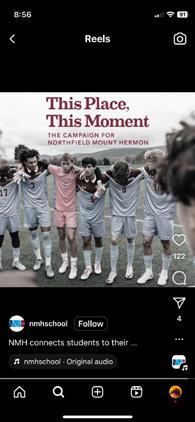
Other young alums talked about the quality of the academic experience at NMH — not just the knowledge they acquired but also a confidence and willingness to take chances. “I know how to manage my time. I know what hard work is. I know that you’re not going to get it the first time, and that’s OK,” Curven said. “Not everyone knows how to embrace the struggle, and I think that’s a really important skill. And so now for me, I feel like: Well, OK, I can do that. I might not be great at it at first, but I will learn. And I think I got that from NMH.”
At the events, board Chair Mariah Calagione ’89, P’18, 20 and Head of School Brian Hargrove, with support from several trustees and campaign volunteers, encouraged the community to support the campaign at whatever levels and ways are meaningful to them to allow future generations of students these kinds of transformative experiences. “We were a school founded on access. Let’s make sure we keep our doors open to those people who otherwise wouldn’t be able to attend. We were a school founded on providing one of the very best educations. Let’s make sure that we are able to compensate our faculty and staff so they can deliver that program,” Hargrove said.
36 NORTHFIELD MOUNT HERMON MAGAZINE CAMPUS NEWS
REBECCA
PHOTOS: MIK MILMAN,
WILKOWSKI
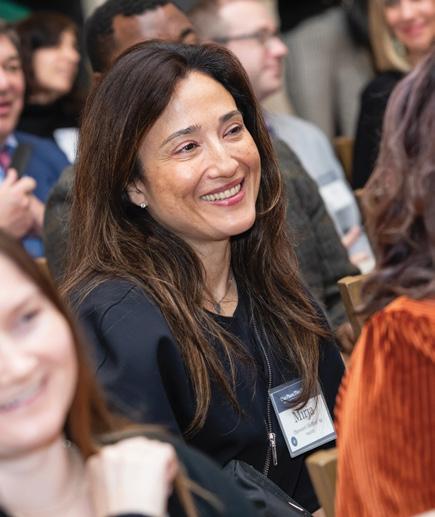


“And let’s make sure that they do so in this beautiful place on the Connecticut River, on the mountainside, that they have the facilities to deliver the program that the world calls for us to deliver today,” he added. “It’s our turn. It’s our moment. It’s our place. Let’s carry it forward.”
While This Place, This Moment has already raised more than 70% of its goal, there is still much to accomplish before we conclude the campaign in 2026. Thankfully, there are exciting incentives for the whole community to participate in ways that work for them.
Learn more and follow updates at campaign.nmhschool.org.
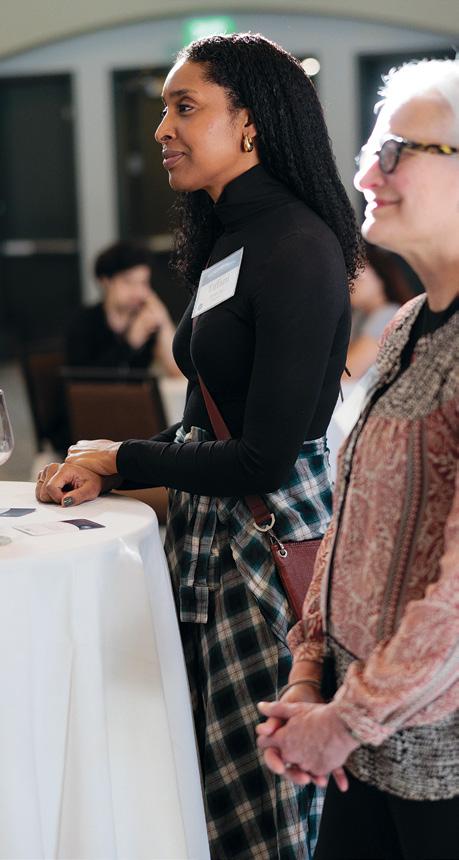
SPRING 2024 37
VERNON J. ’05
Bringing New Strategies to Meet Housing Needs
BY BILL SWEET
By the age of 18, Vernon J. ’05 already had a real estate license, intent on building the kind of generational wealth that can take a lot of work and more than a little luck for a middle-class Brooklyn-born kid. Almost 20 years later, he has embraced newly emergent financial tools as the CEO of Equity Platforms, Inc., launching EquityCoin,* the first digital token on the blockchain backed by affordable housing. Vernon has devoted his career to adding value — not just cash value, but a diverse currency of financial independence, social justice, and knowledge paid forward, thanks to values seeded in childhood and cultivated at Northfield Mount Hermon.
He grew up in Carroll Gardens, on property his great-grandfather purchased for $10,000 in 1953. That property is now worth over $4 million, he is proud to share. A son of a “serial entrepreneur,” Vernon was learning lessons in self-reliance and community from a young age. He remembers being as young as 6, sitting with the family addressing marketing postcards for his father’s cleaning company.
“I’ve never seen my dad be an employee,” Vernon says. “I learned that if I’m going to really use my time for my career, it’s going to be for the longevity of my legacy.”
His parents “had an understanding that I was an independent kid, and they wanted to harness that independence,” he says. As their son’s school
successes mounted, the couple opted to avoid the cutthroat application process for elite New York City schools and instead enrolled Vernon in the Boys’ Club of New York’s Independent School Placement program, which helps connect inner-city boys with scholarships to academically rigorous independent schools. He ultimately chose NMH.
“When my parents dropped me off at freshmen orientation, I felt like I found my tribe,” he says.
Visiting friends at their parents’ sprawling homes, Vernon started to connect the dots between homeownership and generational wealth. “Real estate was the thing that wealthy people had in common, and they were able to harness it and create value from it,” he said. “So I knew when I graduated, that’s what I wanted to go into.”
Vernon credits his 9th-grade humanities course as a turning point, when the class did a unit on people living in government-subsidized housing in the Bronx. Seeing some classmates’ stunned and sober reactions to life stories from the projects drove home the racial and economic divides that exist in this country, he says. But whereas some might see cycles of social ills, he saw real people, with multifaceted lives deserving of celebration as much as solutions.
“Even though it might look like they have desperate situations, these people still have family, they still have love, they still have passion,” Vernon says. “They still have all these things
that make humanity beautiful.
“That class was the start of my mindset that I wanted to help people who are in situations that most people deem as inescapable.”
Five years out of NMH, Vernon assembled a team of partners who pooled $4,500 to buy property at a tax lien auction in Detroit. Other homes followed, homes taken from families for back taxes. He was determined for that pattern to stop.
“It was never our goal to kick people out,” Vernon says. “The goal was to help people and at the same time create value for ourselves.”
The partners signed two-year rental agreements with the tenants, ultimately returning properties to the original owners. “We made $12,000 from a $4,500 investment. People were able to get their property back, and the city was able to get muchneeded tax dollars. Everybody wins.”
Vernon’s real estate business grew in the 2010s, moving commercial and other high-end properties for large-scale investors. To date, he has brokered $183 million in real estate transactions and operates multifamily properties in New York and Pennsylvania, with a focus on affordable housing.
Vernon recalls a turning point in 2020, when he signed a rental agreement with a new tenant, a single mother whose most recent address was a homeless shelter.
“She broke down in the most grateful tears,” he remembers. “Something
38 NORTHFIELD MOUNT HERMON MAGAZINE ALUMNI PROFILE
*EQUITYCOIN IS A REGISTERED TRADEMARK.
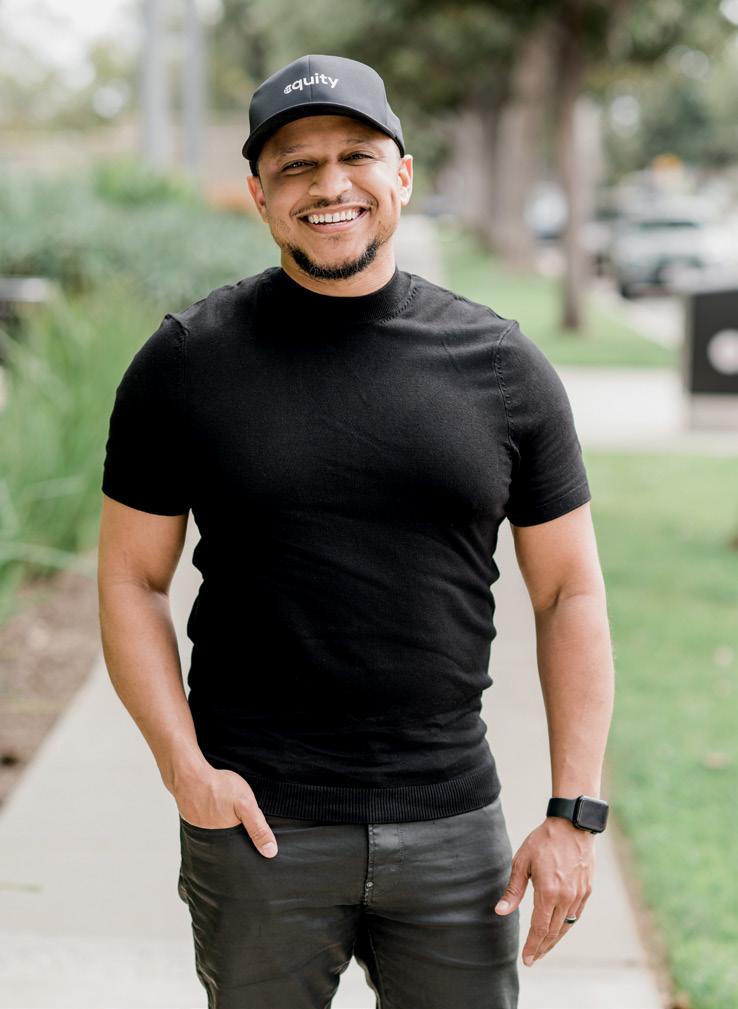
kind of clicked in me and I said, you know what? I want to do this forever.”
Since 2016, he’d been exploring a new tool to do this. The blockchain — a decentralized, digital ledger that records transactions across multiple computers — had potential for implementing economic justice.
Existing as data across a network of computers — data that can be tracked and verified by anyone in the network — the blockchain is by nature transparent and resistant to manipulation, allowing for a level playing field for all participants. This renders it a reliable tool for managing assets, identities, and transactions. By enabling direct peer-to-peer interactions without the need for traditional gatekeepers, the
blockchain makes the entire process inclusive, promoting access for historically marginalized or underserved communities.
In 2021, Vernon’s company created and trademarked EquityCoin, a groundbreaking venture that utilizes this technology to expand affordable housing opportunities. “When people hear blockchain, they immediately go to bitcoin and crypto, and you immediately think of these high moonshots,” he says. In contrast, EquityCoin is a security token, a digital currency that is backed by real assets and federally regulated.
With this technology’s immediacy and security, people in communities historically sidelined by banks can
← As CEO of
become investors. The security token converts real estate equity into digital assets that can be easily bought, sold, or traded on the Ethereum blockchain. Token holders receive dividends from rental income and benefit from the appreciated value of the properties in the portfolio.
“It’s a way for us to help people who are in dire need, providing quality housing while other people are making good money investing in their community,” he says. “They might not be ready to buy their own multifamily property yet, but they can become a token holder and own a fraction of assets that they’re able to gain cash flow from.”
Vernon, acting as lead innovator and thought leader, decided to go all-in on EquityCoin and a suite of related services. EquityCoin’s investments include properties in East New York, Brooklyn, which he describes as that borough’s last vestige of affordable housing, and Harrisburg, the capital of Pennsylvania. The company plans to enter the South Los Angeles and North Miami markets.
“I could have continued commercial real estate brokerage and been making millions without a doubt, but I knew that I’m going to be more fulfilled by housing homeless families while being able to create a legacy for myself and my family,” he says.
“My North Star is helping families find shelter.” [NMH]
Bill Sweet is a freelance writer in western Massachusetts.
SPRING 2024 39
PHOTO: LAUREN SCOTT
Equity Platforms, Vernon J. has brought the blockchain to the affordable housing sector.
ANN DAVLIN ’85
Finding Real-World Climate Solutions
BY ELISE GIBSON
In 1989, Ann Davlin ’85 was 21 years old and fresh out of Lake Forest College when a chance meeting led her to a job as a legislative aide for soon-to-be vice president Sen. Al Gore, now famous as an environmental crusader. Then, at 23, through connections she had made, she landed in the White House as a social secretary for the new first lady, turning down invitations on Hillary Clinton’s behalf. Her connections came through again, and later that same year she was leading meetings at the Pentagon, surrounded by military officers. Her job, in essence, was to address environmental security plans that would help the military by increasing its energy efficiency, like replacing noisy diesel generators with portable solar panels. “The military really gets it,” she says. “They want solutions.”
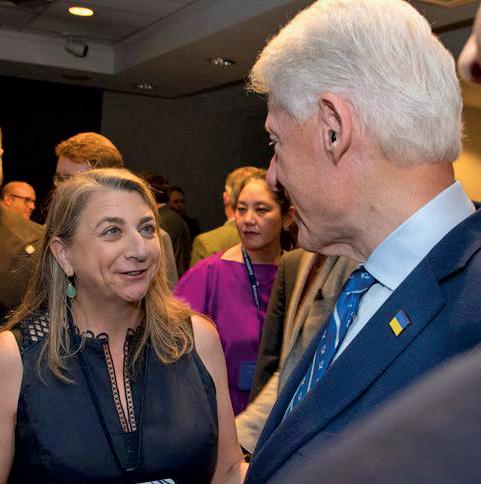
To say Davlin has had a whirlwind of a career is just the start of it. Thanks to her environmental work for both the government and the private sector, sustainability plays a leading role as new policies are enacted, businesses are expanded, and energy sources are considered. Her career network has put her on a first-name basis with the likes of Gore, the Clintons, Sir Richard Branson, and George Stephanopoulos. As she speaks of the many facets of her career, two themes emerge: Connections have fueled her rise. (“Don’t be afraid to pick up the phone,” she advises young people.) And through her many jobs — all focused on climate solutions — she has sharpened her vision of how best to contribute to significant and lasting change.
Davlin got her first taste of influence at the Department of Defense, in a new office dedicated to improving energy efficiency and security at military bases around the world. “Every base is like a city,” she notes. “My office made it possible to put renewable energy on military bases.”
Her DOD connections led to a series of environmental jobs for both nonprofits and the government. Then, in 2009, she joined the Carbon War Room, launched by billionaire entrepreneur and visionary Richard Branson. “He was asking, ‘What’s a solution we can implement that will take a gigaton of carbon out of
the atmosphere?’” That kind of big thinking led her to an epiphany: The private sector could be the quickest route to significant climate solutions. “They control a lot of money, they control a lot of infrastructure, and you can do things directly if you can make money or save money for a company,” she says.
The mission of the Carbon War Room was to accelerate business solutions to advance a low-carbon economy. “The work we were doing had the capacity to have the biggest impact on addressing climate change around the globe,” she says.
When the Carbon War Room ended, Davlin turned to impact investing as a way to implement solutions. She launched her own consulting company, the Davlin Development Group, through which she advised companies on raising capital for clean-energy projects and creating strategies for adding value via corporate social responsibility. She also advised clients on impact investing — that is, investing in innovative companies that create long-range climate-friendly solutions that can last for generations.
Those experiences led to her next career epiphany. “The way we can scale climate-change solutions is getting inside the board rooms. Boards may not understand climate change, but they understand numbers,” Davlin says. “I was looking for my next gig, and I realized that it’s data.”
40 NORTHFIELD MOUNT HERMON MAGAZINE ALUMNI PROFILE
Davlin with President Bill Clinton, one of many leaders she’s connected with through her work
Through her many jobs, Davlin has sharpened her vision of how best to contribute to significant and lasting change.
In 2020, Davlin joined a firm that measures a client’s carbon footprint, models ways to lower it, and then shows how to finance it. Its clients were governments, utilities, and military bases. The approach was so successful, she says, that the firm was acquired in 2022 by Constellation Energy, which describes itself as the largest carbon-neutral utility in the United States. “And so I went from chief strategy officer to being a manager for commercialization and partnerships.” In essence, she works with the banking sector and public companies to improve their carbon footprints and to use data to report on their progress.
Davlin’s deep concern with the environment and social justice began in childhood in Louisiana, as she saw her politically involved mother stand up to local racist norms. After her family moved to Boston when she was a teen, she searched for a school with a strong ethos of embracing a diversity of students. Entering NMH as a junior, she met young people from around the world, giving a face to global issues, she says. And while admittedly her grades weren’t the best, NMH’s vibrant extracurriculars gave her a place where her leadership skills could grow and shine. As a

senior, she was president of student government, joined the rowing team, wrote persuasive pieces for The Bridge, and became involved in political issues and elections. “If I hadn’t been at NMH, I don’t know where I would be today,” says Davlin, who regularly attends her class reunions and enjoys connecting with fellow alums.
In her work, Davlin hires interns and volunteers as a mentor to the
next generation of problem-solvers. She likes what she sees. “This generation is doing a lot of things smarter than my generation. They drive a lot less, they’re focused on better food, they’re leapfrogging a lot of things my generation missed,” she says. “These things give me hope.” [NMH]
Elise Gibson is a freelance journalist in western Massachusetts
SPRING 2024 41
PHOTO: ADAM GLANZMAN
TURNER
ARCHIVAL PHOTOS COURTESY OF THE NMH ARCHIVES
 STORY BY MAUREEN
PHOTOS BY MATTHEW CAVANAUGH
STORY BY MAUREEN
PHOTOS BY MATTHEW CAVANAUGH
ells of the Magic The B
NMH’s carillon revival connects students across 100 years of history
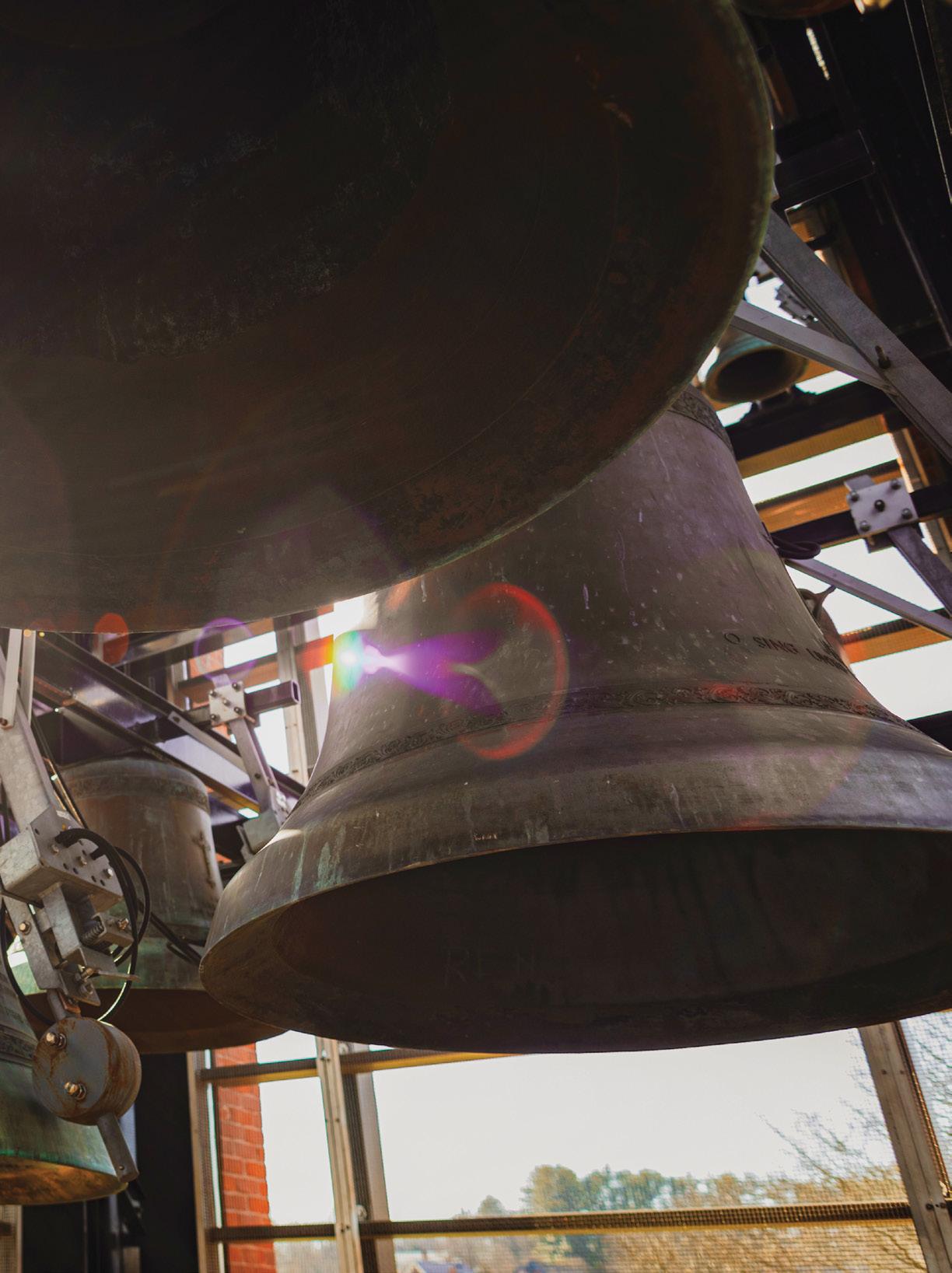
CCharlie Tierney, associate head of school, was heading from his house on campus to his office in Holbrook Hall one morning last winter when he was stopped in his tracks by the scene before him. “The kids were walking to class, and it was snowing, and the carillon was playing,” he recalls. “And I just thought: This is what memories are made of.”
This year marks the 100th anniversary of NMH’s carillon, which first chimed in 1924 during Easter service in Russell Sage Chapel on the Northfield campus. Over the years, the instrument was played mostly on special occasions, from concerts by expert carillon players — known as carillonneurs — to events like Commencement.
But lately, the campus community has been hearing the 47-bell carillon a lot more: Since last fall, the bells, which now live in the tower of the Rhodes Arts Center, have rung several times a day, with a selection of songs that range from the traditional (“Jerusalem”) to the unexpected (“Somewhere Over the Rainbow”).
NMH’s carillon revival is due in large part to Tierney’s enthusiasm for the instrument and its special role at the school. “It’s always struck me as a magical instrument on campuses and particularly on ours, given our hillside and our views across the river,” he says. “And I always loved the idea of the carillon conveying our school’s musical traditions as well as the spirit of Northfield across the river.”
Tierney brought his idea to Craig Sandford, assistant director of the choral program. Sandford had played the instrument a handful of times in the previous school year, for events such as Family Days. This year, however, he and Tierney set out to make the carillon a daily part of life at NMH. The bells now chime as often as five times a day, marking transition moments: the beginning and the end of the academic day, the lunch hour, dinnertime, and the start of study hall. (On the weekends, the schedule is lighter,
in recognition of the fact that not every student would welcome chiming bells at 8:50 am.)
Sandford and Tierney were able to create this robust schedule by exploring the instrument’s previously untapped automation features. Traditionally, a carillon is operated via hand and foot controls that the musician uses to ring the bells; that’s the way it was played for many years at Sage Chapel, Sandford notes. Modern versions of the instrument, however, are played on a keyboard, not unlike an organ. At NMH, that keyboard sits on the ground floor of the Rhodes Arts Center, below the tower where the bells hang. The carillonneur can play the bells live or can program songs into the instrument to be played later, on a timer.
Those programmed songs are not, it’s important to note, recorded music that is broadcast later; rather, the instrument captures the individual notes of a song that the bells will chime at a scheduled time. “It’s literally the bells sounding, but it’s digitally triggered,” Sandford explains.
NMH’s carillon has a diverse and ever-increasing catalog of music that Tierney describes as “equal parts intentionality and whimsy.” While some of the music (popular songs, classical arrangements) came already programmed in the instrument’s console, Sandford has recorded other music.
In addition to school standards such as “Jerusalem” and the “Northfield Benediction,” the library includes this year’s senior class hymn, “Simple Gifts.” In December, during the weeks before Vespers, holiday carols were added to the daily rotation. The opening of the fall musical, “Les Miserables,” was marked — to the delight of the cast and crew — with renditions of “I Dreamed a Dream” and “Stars.” Sandford also sometimes takes requests, such as the “Harry Potter” theme, which he first performed at a Family Days concert and which now sometimes accompanies students as they walk to class. “It’s teamwork,” he says of the growing collection of music.
The carillon was a gift to the then-Northfield Seminary from Fleming H. Revell, brother of Emma Revell Moody, the wife of school founder D.L. Moody. Revell made the gift in 1922, to commemorate the 50th anniversary of his marriage to Josephine Barbour, who died that same year. Two years later, the carillon was completed and installed in Sage Chapel. It comprised eight bells, cast in London by the
44 NORTHFIELD MOUNT HERMON MAGAZINE
THEN & NOW
47 BELLS
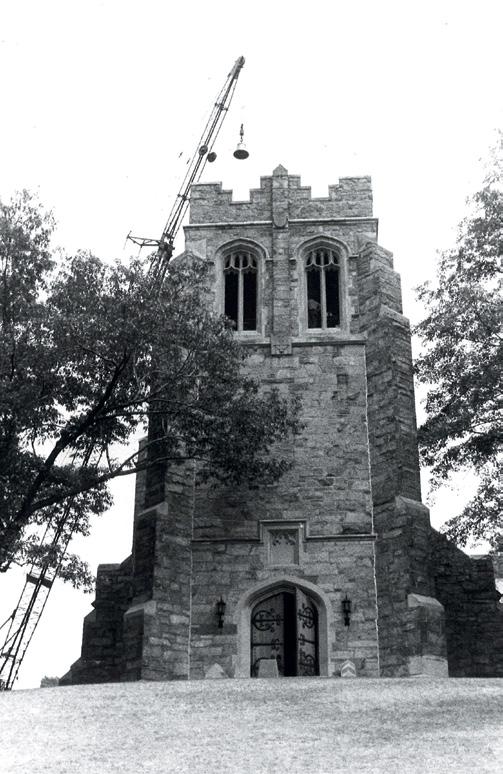

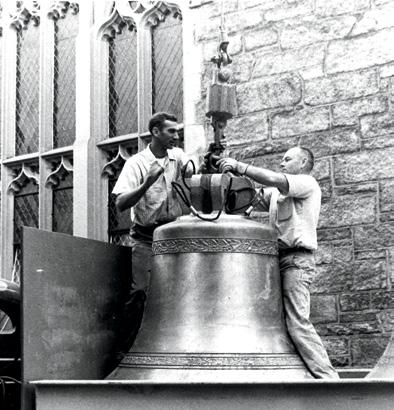
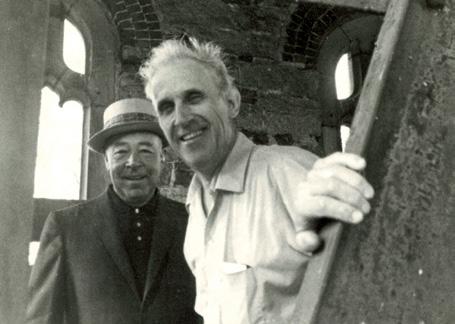
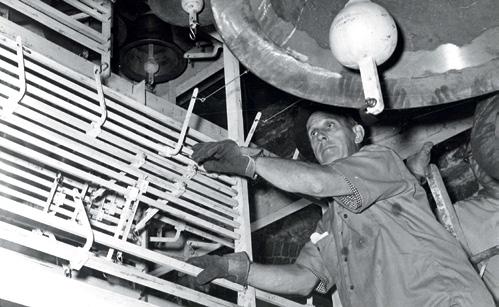
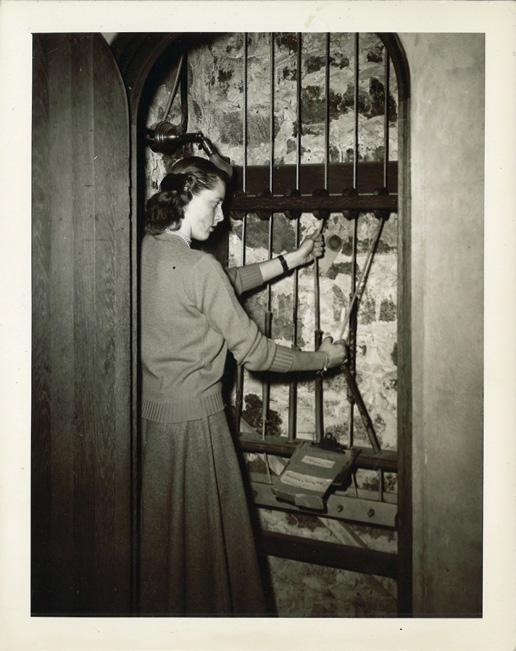
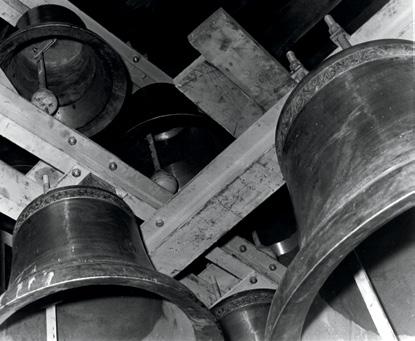
z
SPRING 2024 45
C
1. A crane lowering the new McRoberts Carillon bells into Sage Chapel 2. Each of the bells bears an inscription from Psalm 96. 3. Workers preparing the bells for installation
1 2 5 6 7 3 4
4. A Northfield student playing the original eightbell carillon 5. Donor Carl McRoberts and bellmaster Arthur Bigelow 6. Arthur Bigelow tunes the newly installed bells 7. Together, the 47 bells weigh 20 tons
THE BELLS CHIME
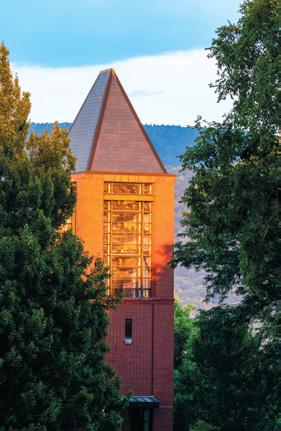

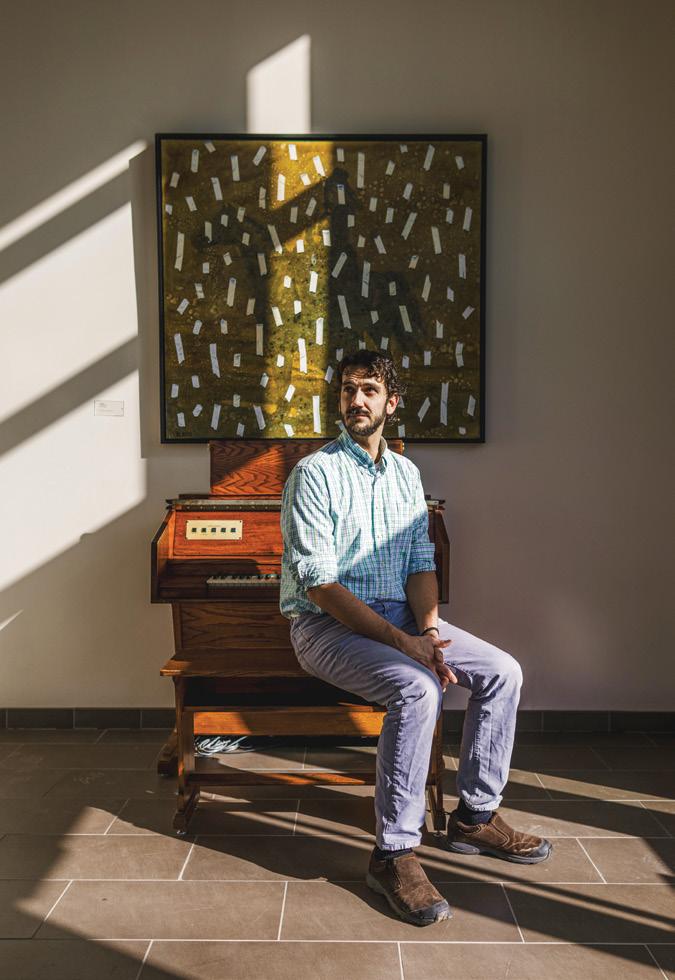
same firm that made Big Ben. The bells weighed 12,600 pounds total; the largest, the tenor bell, was 4 feet in diameter and weighed just shy of 4,000 pounds.
Craig Sandford, assistant director of choral programs, has been expanding the carillon’s catalog.
In 1966, the carillon underwent a major expansion, thanks to a gift from Carl McRoberts, Mount Hermon class of 1912, and his brother, James, in honor of their parents. The original eight bells were removed and sent to Annecyle-Vieux, France, to the Paccard Foundry, an internationally renowned maker of church bells and carillons. There they were melted down and combined with additional brass to create 47 bells, which weighed 20 tons in total. Each of the 15 largest bells was inscribed with the name of an Old Testament prophet and a passage from Psalm 96: “I am Jeremiah. O sing unto the Lord a new song,” one reads. “I am Obadiah. O sing unto the Lord; bless His name,” reads another.
The project was a major undertaking, one that required some high-level intervention, notes NMH archivist Peter Weis ’78: Thanks to a tariff on the importation of bells from abroad, the school was presented with a $2,000 tax bill to bring the recast bells back home. It took a special bill, filed by then-U.S. Rep. Sylvio Conte, whose district included the two campuses, to get the duty waived for the school.
The new bells — now called the McRoberts Carillon — were dedicated at a ceremony in September of 1966, which included a concert by Arthur Bigelow, a Princeton professor and bellmaster who had overseen the casting and installation process. In a letter to James McRoberts, Bigelow wrote, “The instrument is New England’s most harmonious, musical, tonally-balanced carillon from bass to upper notes. Its highest notes do not become ‘tinny’ as so many
46 NORTHFIELD MOUNT HERMON MAGAZINE THEN & NOW
z
UP TO 5 TIMES A DAY
“The instrument is New England’s most harmonious, musical, tonally-balanced carillon. It can be imagined how these perfect bronzen cups will reverberate though the hills and valleys of one of New England’s most beautiful regions.”
zNMH’s Carillon
Catalog Includes
do, and its rounded notes are pure gold. … [I]t can be imagined how these perfect bronzen cups will reverberate through the hills and valleys of one of New England’s most beautiful regions.”
Forty-two years later, the carillon was on the move again, this time to the Gill campus. The move coincided with the opening of the Rhodes Arts Center, which included a specially built tower to house the bells. The effort was supported by a fundraising campaign by the Northfield and Mount Hermon classes of 1958 on the occasion of their 50th reunion, which included a special celebration to mark the installation.
For today’s students, the bells are part of the soundtrack of their day as they move about campus — and, for some, possibly a new musical instrument to master. Christie Wang ’25, a longtime piano and viola player, wasn’t even aware of the carillon at the beginning of the school year when Steven BathoryPeeler, conductor of the honors chamber orchestra, sent the musicians on a scavenger hunt around campus. “One of the items on there was the carillon,” Wang said. “We were all running around like, ‘Oh, no, what’s the carillon?’ We had no idea what it was.”
But once they identified it, Wang was intrigued. She approached Sandford and expressed her interest in learning to play the carillon. Her first attempt — she tried out Rachmaninoff’s “Prelude in C-sharp minor” on the instrument’s console, without the bells activated— turned out not to be the right choice for the instrument, because its chords are too dense for a carillon. Now she’s thinking of a new piece to try, possibly something from the soundtrack to the animated film “Howl’s Moving Castle.”
“I just want to see if I can do this,” Wang said. “It seems like a good way to play with music, and I like the idea of ringing the bells. It would be a fun way to make a mark on NMH, to leave something behind.” [NMH]
(( LISTEN HERE ))
To see and hear the McRoberts Carillon in action, visit bit.ly/4dnoblK.
“Jerusalem”
“Northfield Benediction”
“Simple Gifts”
“Somewhere Over the Rainbow”
“I Dreamed a Dream”
“Stars”
“Hedwig's Theme” from “Harry Potter”
What, Exactly, Is a Carillon?
“A carillon is a musical instrument composed of at least 23 carillon bells, arranged in chromatic sequence, so tuned as to produce concordant harmony when many bells are sounded together,” according to the Guild of Carillonneurs in North America. (Instruments with fewer bells, such as the original one at Sage Chapel, are technically called “chimes.”)
The carillon traces its beginnings to the 15th century, when Flemish bell makers developed a means of tuning bells. The instrument went on to enjoy a “golden age” in the 17th century in the Low Countries of Europe, where a carillon was a source of pride for a community. “It was said that good bells and good schools were the sign of a well-run city,” the guild notes.
The modern carillon is played from a keyboard that resembles an organ, with keys that are played by hand and pedals that are played by foot. The keyboard is connected by mechanical links to the bells’ clappers, which move in response to strike the bells. Ideally, the keyboard is located close to the bell tower (at NMH, it sits directly below the tower), since shorter mechanical connections allow for more precise playing.
Precision is key to mastering the carillon, which plays differently than a piano, notes Craig Sandford, assistant director of NMH’s choral program. “Harmony is different on the carillon than on the piano,” he says. “On the piano, you play the big chords, and it sounds great. And that doesn’t sound great on the carillon. So [you need] to voice chords a little bit differently.” There’s also a slight delay between the striking of a key and the corresponding chiming of the bells, which requires some adjustment on the part of the musician, he adds.
SPRING 2024 47

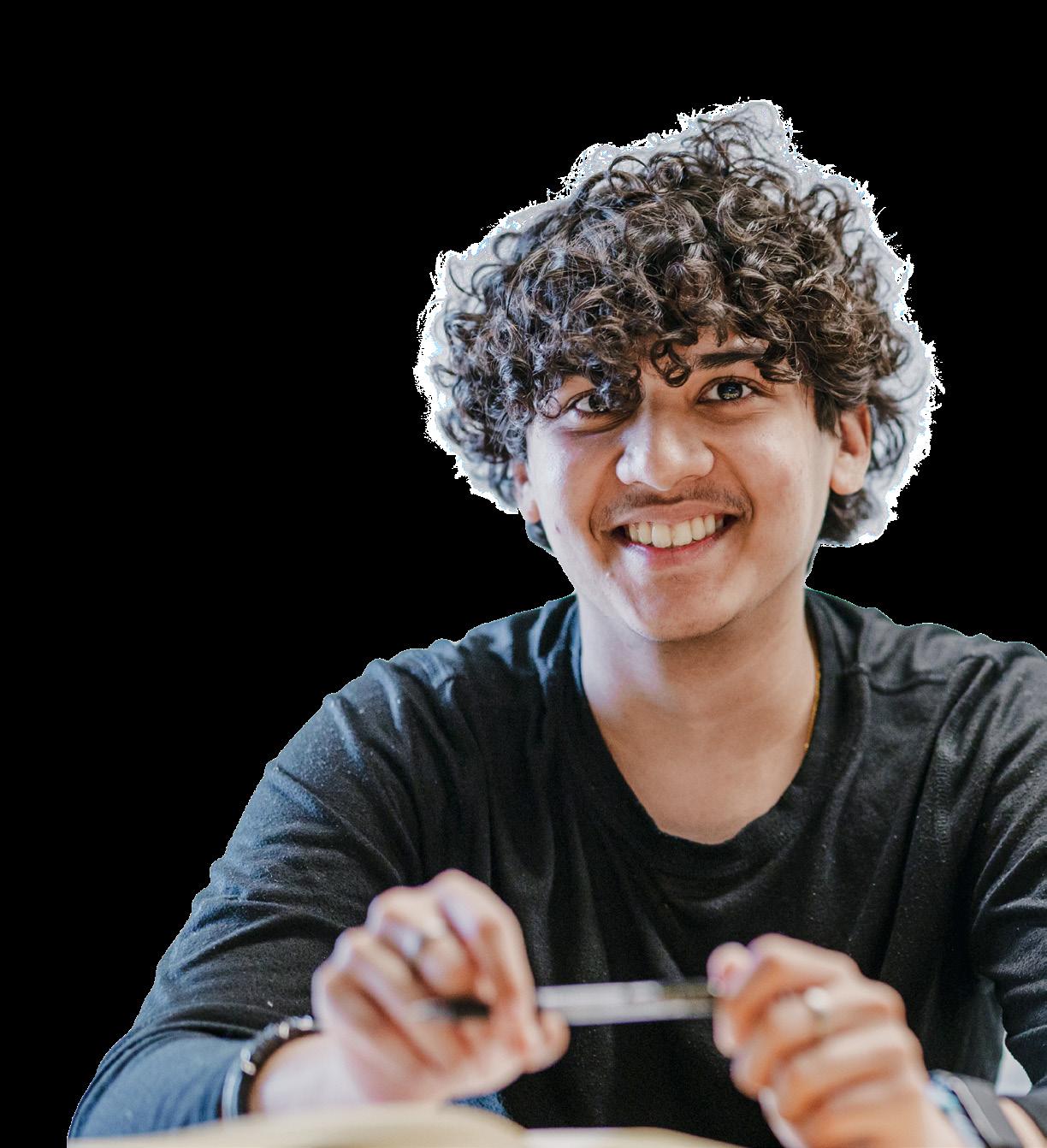
Real Solutions
In the Rhodes Fellowship Course in Social Entrepreneurship, students tackle social issues with a needsbased approach


Laure Mandiamy has long had a passion for social justice work:
As a student at Northfield Mount Hermon, she was a member of the Student Diversity Committee, helping organize summits and other campus programs. Now a sophomore at Tufts University, she’s part of the Tisch Scholars, a leadership and civic engagement program that includes service work with community organizations. For Mandiamy, that’s at Enroot, a Cambridge nonprofit that offers mentoring and tutoring to immigrant teens.
Activism is vital, rewarding — and sometimes frustrating, Mandiamy says. “A lot of times, people get burnt out in social justice movements. You’re protesting or you’re organizing and sometimes you’re not getting the results that you want.” When you’re tackling huge issues, she says, it can be hard to make a visible impact.
Mandiamy found a way to do just that at NMH, in the Rhodes Fellowship Course in Social Entrepreneurship. The interdisciplinary two-year course introduces students to the concept of applying a for-profit business model to social or environmental issues. In the first year of the class, students explore deeply a range of social problems — the housing crisis, mass incarceration, inequities in healthcare and education — to understand their roots and their far-reaching effects. Students then have the option to apply for a second year of the program, where they develop practical, achievable projects that address some facet of one of the problems they’ve explored.
That emphasis on the practical and achievable is key. “In social justice work, you often have these issues that end up being deeply complex and interconnected with a lot of other social issues,” and that can make it hard to find an entry point, says Mandiamy. “[The course] really got me to see that a lot of my ideas can be turned into real-world change.” For her final project,

Mandiamy worked with several classmates to create a children’s book that addressed the stigma around the incarceration system— a seemingly small but potentially powerful way to address one aspect of a complex issue.
The point of the Rhodes fellowship goes beyond the individual enterprises students create while in the class, however — it also gives them the tools to continue that work throughout their lives.
The Rhodes Fellowship Course in Social Entrepreneurship launched in the fall of 2015, supported by a gift from alumnus William R. Rhodes, class of 1953. Grant Gonzalez, NMH’s assistant head of school for campus life, helped create and co-teach the new program. For inspiration, he looked to college programs, since few high schools offer anything similar. Students must apply to take the course, where the first order of business
50 NORTHFIELD MOUNT HERMON MAGAZINE
is figuring out just what, exactly, social entrepreneurship means.
That’s not an easy task. “We start by distinguishing social entrepreneurship from things like service or [for-profit] entrepreneurship,” Gonzalez says. Social enterprises have a lot in common with for-profit ventures: In order to succeed, both must generate enough profit to allow them to be self-sustaining, something that separates them from service or charity work. But for a social enterprise, it’s not enough to achieve financial profit — just as important is the social profit that it creates, Gonzalez says.
Once the class settles on a definition of social entrepreneurship, it moves on to exploring some key social issues, such as criminal justice, food systems, housing and homelessness, and education. Yash Grover, a senior who was born in Uganda and now lives in Mumbai, has learned about American social issues that he wouldn’t have otherwise been exposed to, like the school-to-prison pipeline and real-estate redlining. “I’ve learned how they impact our day-to-day life and also how we can create solutions,” says Grover. “I’ve learned a lot about the impacts of culture, of ethnicity, race, language,”
which has inspired him to study anthropology in college.
Tae Kim, who joined the NMH faculty last fall, now teaches the first year of the fellowship program. (Gonzalez serves as an advisor to second-year students working on their enterprises.) He’s impressed by the passion that students bring to the course. “They are really bright and incredibly articulate in social issues. They have been thinking about this very deeply,” Kim says. “What they’re looking for is information: What are the issues? Where can we apply our energy, our talent? How can we develop our human capital so that we will have the appropriate tools to go about solving these problems?”
The challenge, Kim says, is getting students to think beyond a service or philanthropic approach and instead consider how to address social problems through an enterprise model: “How do you build a business platform? How do you find financing? What are the resources available? How do you manage a business? How do you keep control of costs? How do you make sure that you’re bringing in enough revenue to keep your business going?
“Even coming up with a business that is purely for profit is hard enough. So many businesses fail in their first year,” Kim continues. “But to come up with something that is for profit, but you don’t get to keep all of that profit — that’s an additional constraint that really challenges the students. … The biggest difficulty they have is in understanding that a social enterprise is supposed to make money and that you can personally profit from that. This is not a charity. We do not want to solicit donations. You can solicit seed money. But this is very much a business.”
To understand the concept, the class connects with social entrepreneurs and looks at examples of successful social enterprises. One model Kim shared with students is a dry-cleaning business in Cleveland run by worker-owners who had been in prison or drug rehab. “These people, for the first time, have a sense of ownership,” Kim explains. “This is a profit-sharing enterprise, but the person who set up the enterprise also takes some of that money for themselves, because they have to earn a salary. It’s a huge impact project, and it affects the community on an incredibly large level. …
“Social entrepreneurship is not about charity,” Kim says. “It’s about empowering people to help themselves. It’s about empowering communities to help themselves. It’s about building systems
SPRING 2024 51
← Laure Mandiamy ‘22 and classmates created a children’s book about the incarceration system.
big
food insecurity • homelessness • mass incarceration • inequities in education
Students in the course explore
issues: •


that are self-sustaining and don’t rely on donations — systems that rely on the active participation of the people being helped. And it’s a very powerful and very different model.”
For each topic the class takes on, students dig deeply into root causes, Kim says. “What is redlining? How does it affect communities today? How does that, in turn, affect childhood poverty? Why are crime rates higher in some areas than others? We’re able to see that there aren’t pockets of events; there are long chains that are often interconnected. So when we look at education reform, we see that it’s also related to housing and institutional and historical poverty. It’s also related to our criminal justice system and mass incarceration. Students get a much deeper and more holistic view of recent history.”
Grace Bird, a junior from Gill, Massachusetts, appreciates both the depth of the material the class covers and the creativity that it demands of students. “Right now we’re learning about prison and inmates and death row and the morals of all of that,” she says. “We’re learning about topics I’ve never known about or had an opportunity to learn about.”
At the end of each unit, the students work in groups to create mock enterprises to get them thinking about the practicalities of developing solutions to the problems they’ve been study-
ing. “We all are given the same prompt, but we come up with such diverse ideas,” Bird says. “It’s interesting to see how different brains take information and create something.” For her, the most rewarding project came at the end of the education unit, when her team developed an enterprise to help young children with anxiety — something she wrestled with when she first started school.
The mock enterprise projects are “purposely collaborative,” Gonzalez says. Students bring differing experiences and perspectives as they first identify a problem and then develop a plan to address it. They’re also encouraged to reach out to practitioners and other outside partners, to begin developing skills and making connections that could help prepare them for the second year of the fellowship.
Mandiamy spent her second year in the program working with classmates Victoria Malcolm, Sophie Michelsen, and Destiny Montero on an enterprise called Margins. The group members started with a shared interest in the issue of prison reform, then spent some time debating the right approach; ultimately, Montero came up with the idea for a children’s book on the topic.
“Our mission was to create picture books to promote compassion, respect, and inclusivity,” Mandiamy says. “[The book] felt like an accumulation of what we did throughout the entire course, which was learning about social justice issues. This was a way to replicate that and help children [develop] this understanding of social justice issues and develop into critical thinkers and people who challenge systems.”
Creating the book was a long process that began with interviewing people who’d been incarcerated or had loved ones who were. “We had to find people who were willing to share their experiences,” Mandiamy says. “We took our time, because we wanted to do this in the most ethical way possible — not just go in, take the information, and leave. We wanted to make sure that we weren’t harming anyone and were doing it in a way so that everyone got the best out of the experience.”
The next step was to develop a storyline that conveyed big ideas in a way that was accessible to children and that didn’t inadvertently perpetuate stereotypes. “It was a balancing act,” Mandiamy says. “We had to make sure that the lessons that we wanted to put into the book were what people came out with.” In the end, the group worked with an independent illustrator, Alvin Cadiz, to create a digital book about a child
52 NORTHFIELD MOUNT HERMON MAGAZINE
↑ Grace Bird ’25 appreciates the ability to deeply explore topics in the course.
whose father had been in prison and how that affected the family. In the end, the father rejoins the family and community, emphasizing a key point the team wanted to make, Mandiamy says: “Prison isn’t the defining moment of someone’s life. It doesn’t define who they are.” At the end of the year, they hosted a reading on campus for the children of faculty.
Two years after she completed the Rhodes fellowship, Mandiamy carries with her many of the lessons she learned in the course. “The impact that we made might have been small: reading a prison-reform book to children,” she says. “But in one of my [Tufts] classes, we discussed that, a lot of the time, local wins are what drives bigger movements, whether or not we see it. … I look at the book we made as a transformative experience, to have children think about topics that they’ve never talked about or thought about before. Just that one lesson that they’re able to take away is enough for me.”
Heidi Leeds ’18 and Isabella Lombino ’18 were in the second cohort of Rhodes fellows. They both were drawn to the course because of its experiential approach. “You spend a lot of your life in school learning all these things, but you don’t really have much chance to apply them,” Lombino says. “I was excited to put some of that education into action and build something.”
She also liked that the course offered another way of tackling social issues, beyond the shortterm service opportunities she took part in at NMH. “What felt different about the social entrepreneurship program was the ability to build something more sustainable — not necessarily in the environmental sense, but in the longevity sense,” she says. “We got to explore all these different problems and then had the freedom to choose what we were really interested in. As a young person, being able to see this whole world of opportunity to make a difference was so valuable.”
“[The students] are really bright and incredibly articulate in social issues. They have been thinking about this very deeply. What they’re looking for is information: What are the issues? Where can we apply our energy, our talent? How can we develop our human capital so that we will have the appropriate tools to go about solving these problems?”
Inspiration struck one day as the friends, who’d recently been traveling, were bemoaning the waste created by the mini shampoo and conditioner bottles stocked by hotels. “We were so frustrated,” Lombino recalls. “We were like: ‘This is so wasteful; you use one ounce, and then this stupid plastic bottle just gets thrown out.’ We weren’t even thinking about it in the context of the class; we were just pondering how annoying it was. Then one of us turned to the other and said: ‘We could do something about this. This is our project.’”
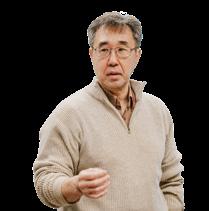
It took some time for the two friends to come up with the right approach. “We had so many far-fetched, grand ideas about how we were going to change the world,” Leeds says. Eventually, their thinking turned toward more modest but achievable projects. “[We decided to] choose a small piece where we could actually make a difference.”
Leeds and Lombino connected the problem of hotel-toiletry waste with another problem they’d learned about: the demand for personal hygiene items at homeless shelters and service agencies. “We had all this waste on one side, and we had this huge amount of need on the other side,” Lombino says. They contacted the Salvation Army in nearby Greenfield, then conducted surveys and interviewed people who used its services to find out if their project would be helpful. “We wanted to make sure we were meeting a need,” Lombino says. “You don’t want to just come in and assume.”
That’s a key lesson students learn in the Rhodes fellowship, Gonzalez says. “A solutions-based approach means that you’re coming with a solution in hand,” he says. “A needs-based approach means you’re trying to figure out the needs of the people that you’re serving and
SPRING 2024 53
TAE KIM teaches the first year of the Rhodes fellowship (pictured inset). ↙
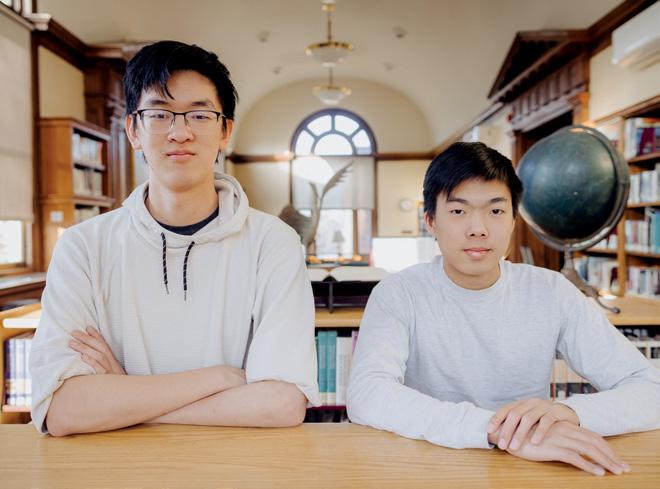

working alongside and taking that into account. That’s a really important distinction.”
Once they’d identified a need, Lombino and Leeds launched their enterprise, called Shampoo Shuttle, which collected excess toiletries from local hotels to distribute to Salvation Army clients. “We did a lot of cold-calling of hotels: ‘Hey, we’d like to come and take all your little shampoo bottles,’” Lombino recalls with a laugh.
She and Leeds consolidated the partially used toiletries into clean bottles. “It was important to us that it felt like people were getting something that felt new” and not just a cast-off, Lombino says. The pair put their engineering skills to use, using a 3D printer to create a funnel system to make the process easier. They also hosted campus bottling events, where classmates would pitch in. When they graduated, they handed off the enterprise to younger students who kept it going for a time.
Beyond the success of their project, Leeds says, the Rhodes course helped her develop vital, transferable skills that she uses in her current work teaching high school students: research, public speaking, working with community members, knowing how to develop a project from start to finish. “So much of that is a big part of teaching,” says Leeds, who graduated from Williams College and now teaches math at the School for Ethics and Global Leadership in London.
“It was really rewarding,” Lombino says of the fellowship. “It was one of those moments when you think: Wow, I’ve spent the last year-plus learning about all these things and now I’m
actually doing something that I came up with on my own that is impacting people.”
Lombino carried that enthusiasm with her to Tufts University, where she minored in entrepreneurship, and into work at start-ups with environmental missions. She now works at Flux Marine, a Rhode Island company that develops electric boat motors. “I don’t know if I even would have known what [entrepreneurship] was if it wasn’t for the NMH program,” she says. “What I learned through the class was that if you see a problem, you can make a change to it.”
T↑ Richard Tang ’24 and Curtis Ho ‘24 developed a STEM tutoring service.
he Rhodes fellowship is a competitive program, and not every student who completes the first year is accepted into the second year. Sometimes, students submit thoughtful proposals that tackle important issues but aren’t selected because their plans are too broad for them to accomplish during the course of the fellowship, Kim notes. “In most cases, they were just thinking too big.”
Student enterprises don’t have to be big, he continues. “Some can be very small. But small doesn’t mean that it’s not without impact.” By way of example, he points to the “very elegantly simple and effective” Fruit Bites, a candied-orange peel business created this year by Kitty Zhang ’24.
Zhang came up with the idea during her first year in the fellowship with a classmate, Iris Chai ’23, after the two watched a video about making the candy for a Chinese New Year celebration. “We were like: We can do that!” recalls Zhang, who saw the project as a way to reduce food waste.
The Rhodes Course is a
YEAR FELLOWSHIP, giving students time to dig deeply into complex subjects.
Initially, Zhang and her roommate would collect the peels themselves. (“We would eat at least two oranges each day!” she says.) Then, at Gonzalez’s urging, she reached out to Rich Messer, NMH’s director of dining services, to suggest a partnership. With Messer on board, Zhang began to spend time in the kitchen at Alumni Hall every Sunday peeling oranges, taking the peels and leaving the fruit for the dining staff to use in other dishes. She makes the candy in her dorm, following a recipe developed after some trial and error, with her friends happily serving as taste-testers.
Fruit Bites brings together Zhang’s interests in sustainability (she’s a member of the student Ecoleaders group) and in food security, which she learned about in the Rhodes course. She sells the candy on campus and through a website she
54 NORTHFIELD MOUNT HERMON MAGAZINE
2
created and plans to donate profits to the Food Bank of Western Massachusetts. “That’s what I like most about my project,” she says. “I want to provide food for people and also use my money to help others.”
Zhang’s classmates Curtis Ho and Richard Tang developed their social enterprise after learning about inequities in education, particularly the limited STEM opportunities in some schools. They decided to create a tutoring company to work with students at public and charter schools. Tang would offer tutoring in the Python programming language and Ho would teach about 3D modeling.
But first, they needed students. Initially, Tang says, “I was pretty ambitious: I wanted to get a client nailed down within the first month. Then I met reality.” Working with Gonzalez, who encouraged them to set short- and long-term goals, they focused on creating a pilot program that would allow them to try out their curriculum and demonstrate its effectiveness. “There’s a lot of work, a lot of planning in social enterprise, developing and creating this opportunity,” Ho says.
With a plan in place, the pair began contacting schools around the region, pitching their program. (Tang likens the process to being “an online salesman who’s walking up to everyone’s inbox and saying: ‘This is my idea. I would love to talk to you more about it. If you’re interested, please, please contact me back.’”) Many calls and emails later, they found their first client, City on a Hill, a charter school in Boston.
Alyx Coty, a teacher at the school, invited Ho and Tang to work with her 9th-grade biology class, offering hour-long Zoom sessions once a week. “It’s hands-on and students get a chance to do something different from in-class work,” she says. She’s been impressed with the NMH students’ work. “They’re very patient,” she says, noting that a class of 9th-graders can be rambunctious. “They handle that like champs.” In the future, she adds, she thinks the program would be even more effective with in-person tutoring. Ho and Tang hope the program will continue after their graduation from NMH. They developed the enterprise with an eye toward scalability, hoping it might become a workjob or service opportunity for students, with more schools signing up for tutoring — and maybe, one day, expanding even beyond NMH to schools around the country.
Notevery social enterprise created in the Rhodes fellowship will live beyond its creators’ graduation. And not every alum of the program will go on to become an entrepreneur.
But they all walk away with invaluable skills and creative strategies for tackling problems and making positive change. “Some of these kids are going to take this and do tremendous, amazing [enterprises] in the future,” Kim says. “But even the ones who may not necessarily use this as a launchpad for future careers, it’s still going to color how they see the world, how they interact with people, and how they conduct business, whether that’s the work that they do or their personal lives.”
To Kim, the Rhodes fellowship exemplifies NMH’s approach to education in action. The school, he notes, encourages students to think deeply about important issues and apply it to their own lives. “Then we say: We now expect you to be better people for this. We expect you to exhibit better citizenship and more caring for your fellow humans. This class says: We expect you to apply this and provide opportunities for other people to better themselves. So it’s everything that we’re teaching.” [NMH]


SPRING 2024
Kitty Zhang ’24 created Fruit Bites, a candied-orange peel business. ↓
Last year, George Pappas ’78 was appointed a judge in the Boston Immigration Court. U.S. Attorney General Merrick Garland administered the oath of office and delivered remarks during the investiture. From 2003 to 2023, George was principal attorney at George D. Pappas Esq. PC, practicing immigration, family, and criminal law and civil litigation. He also provided pro bono legal services to nonprofit organizations around the country.
Last winter, Avril Jones ’81 ran the Garden of Life Palm Beaches Marathon, a fundraiser for the Special Olympics, where she connected with William “Billy” Roberts ’79, Viola (Jackson) Carter ’82, and Kristin (Cole) Sposato ’81. K2 Sports, owned and operated by John Mathews ’81, was a partner on the race. “Despite the gusting headwinds, I did finish and enjoyed some great bonding time with John and Kristin,” Avril writes. “Grateful for these fun and beautiful treasured moments.”

Courtney (Cookie) Smith ’06 married Chad Giacchetto last fall, surrounded by friends and family in St. Thomas.
Claudia Costanzo ’72 recently showed her photography at several exhibitions in Portugal, including pieces from her “Silent Notations” series and her triptych dedicated to the American modern dancer and choreographer Martha Graham. She was also invited by painter Mario Rocha to participate in Arte Na Leira’s XXV Anniversary exhibition in the beautiful mountain village of Arga de Baixo.

Jesus Santana Rodriguez ’94 and his wife, Mariana, are living in Montreal, where he; his brother, Luis Santana Rodriguez ’93; their sister, Karin; and their parents, Dr. Luis Santana Blank and Dr. Elizabeth Rodriguez de Santana, are the founders of Polytone Laser Inc. The medtech company is developing breakthrough lasers for the treatment of solid tumors and neurodegenerative diseases. Its first target application is glioblastoma multiforme, the most common and deadly form of brain tumors in adults.
Paul Wade ’62 has retired from travel writing but still hits the road, marking his 80th birthday with a “rolling celebration” with classmates across the U.S. — including a visit to Santa Monica, where he and his wife, Kathy, connected with Duke Oakley ’62 and his wife, Suzie. The couples saw “The Holdovers,” enjoying scenes shot at NMH. “What did we reminisce about?” Paul writes.
Elizabeth Greensmith Dole ’49 has published a memoir, “Using My Voice: A Journey of Progressive Christianity and Social Activism.” The book includes a chapter on the influence of her three years at Northfield.
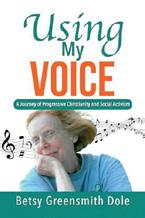
WHAT ELSE ARE YOUR FRIENDS AND CLASSMATES UP TO?
Find the latest NMH alumni news — and share your own — at our online Class Notes portal at nmhschool.org/classnotes.
You can also find fellow alums in our searchable alumni directory at nmhschool.org/alumnidirectory.
We can’t wait to hear from you!
“What happened at Mount Hermon stayed at Mount Hermon.”
56 NORTHFIELD MOUNT HERMON MAGAZINE CLASS ACTS
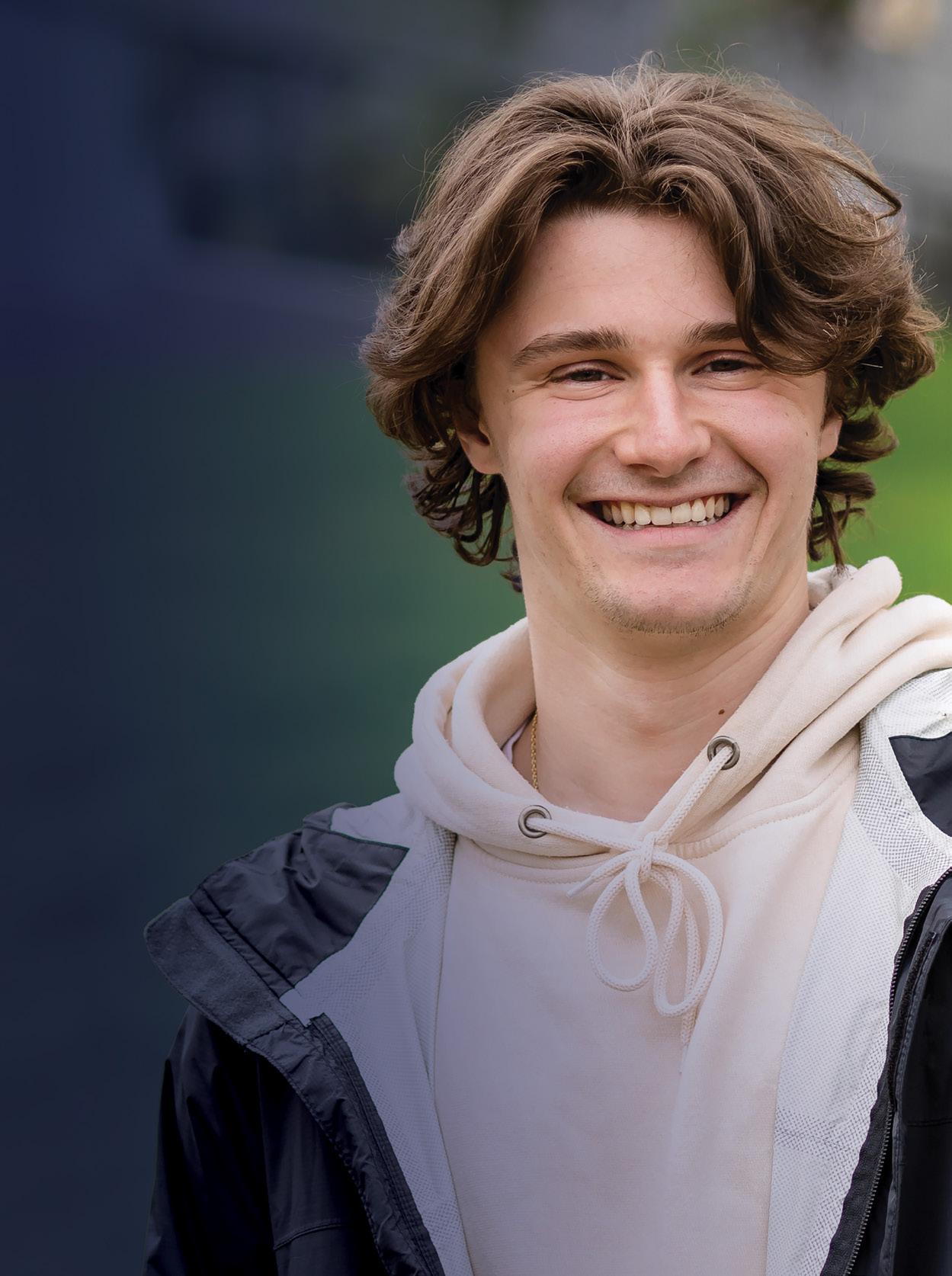
“I’ve met kids from all over the world, all over the country, with different backgrounds and religions and beliefs. I’ve learned so much about other people and their cultures and what they value.”
— NICK ’23, NEW HAMPSHIRE
By supporting the NMH Fund, you help us offer access to a transformative educational experience to a wide range of students and create a vibrant community that benefits every member. The NMH Fund is a key priority of This Place, This Moment: The Campaign for Northfield Mount Hermon. Your gift goes to work immediately to support our students, faculty, and program.
It’s easy to support the NMH Fund. Set up a monthly recurring gift at nmhschool.org/nmhfund.
 “Swim Practice,” a painting by Jessi Shin ’24 Winner of a Gold Key in the Scholastic Art Awards
“Swim Practice,” a painting by Jessi Shin ’24 Winner of a Gold Key in the Scholastic Art Awards
















































































 STORY BY MAUREEN
PHOTOS BY MATTHEW CAVANAUGH
STORY BY MAUREEN
PHOTOS BY MATTHEW CAVANAUGH



























 “Swim Practice,” a painting by Jessi Shin ’24 Winner of a Gold Key in the Scholastic Art Awards
“Swim Practice,” a painting by Jessi Shin ’24 Winner of a Gold Key in the Scholastic Art Awards